Introduction
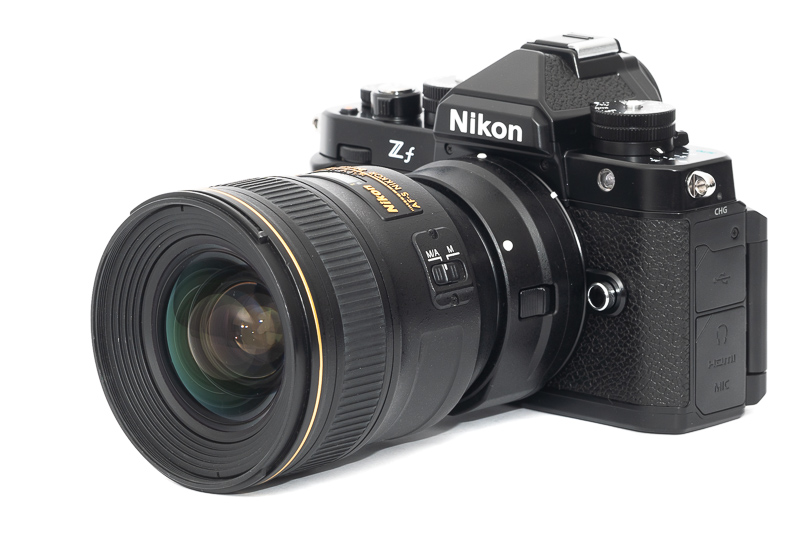
The Nikon AF-S 24mm 1.4G ED N was a big deal when it was released in 2010 and it ended up being my most used lens on Nikon DSLRs from 2012 to 2014. Looking for a fast wide angle lens with AF in 2024, I decided to have another look at this one – instead of spending noticeably bigger money on the noticeably smaller Sony FE 24mm 1.4 GM. Was that an objective decision? Let’s find out together.
Sample Images
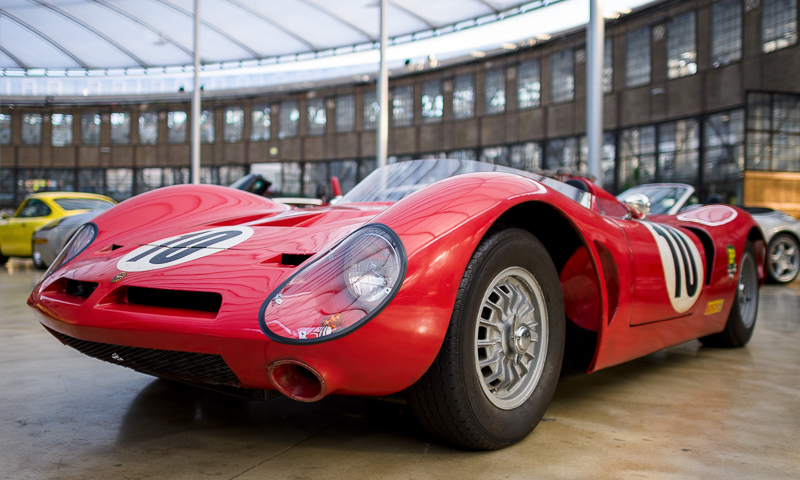
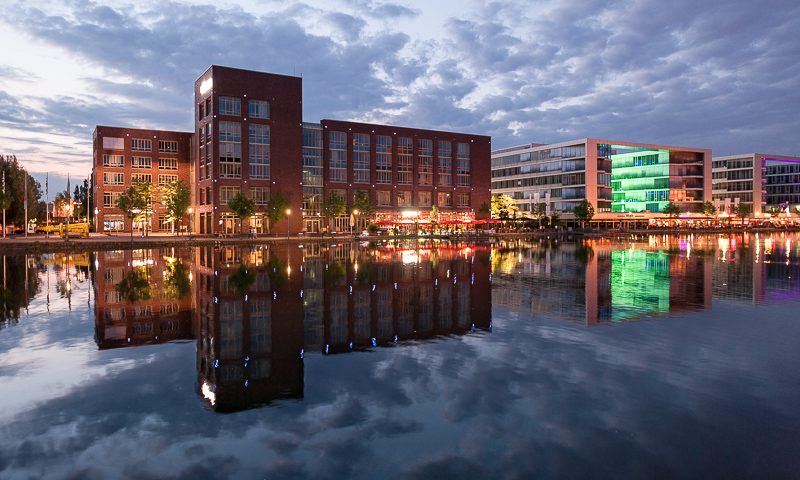
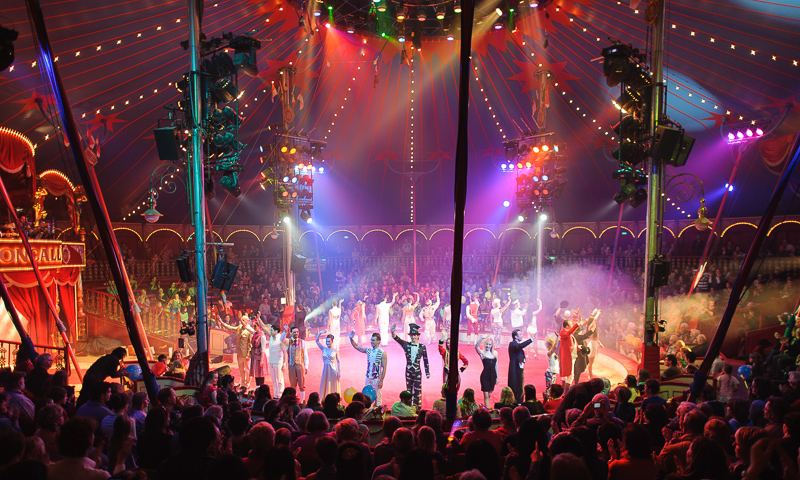




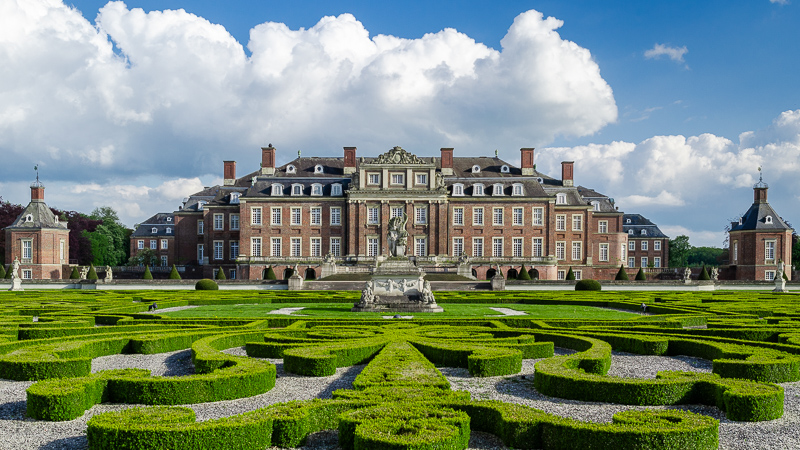
You can find many of the sample images in higher resolution here.
Contents
Specifications
So far there has only been one 24mm 1.4 lens by Nikon which is this Nikon AF-S 24mm 1.4G ED N. Its full specifications are:
-
- Diameter: 83 mm
- Field of view: 84° (diagonally)
- Length: 89 mm
- Weight: 604g (without hood, without caps)
- Filter Diameter: 77 mm
- Number of Aperture Blades: 9 (rounded)
- Elements/Groups: 12/10
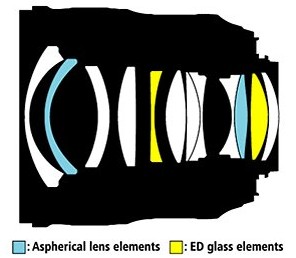
- Close Focusing Distance: 0.25 m
- Maximum Magnification: 1:5.2 (measured)
- Mount: Nikon F
buy from Amazon.com | Amazon.de | B&H | ebay.com | ebay.de (affiliate links) for $1.999 (new) or $550+ (used)
History
This Nikon AF-S 24mm 1.4G had been released in 2010, so three years after Nikon’s big release of the D3 and D700 – Nikon’s first digital fullframe SLRs. The release of these digital fullframe SLRs, especially after Nikon told their customers for 8 years – since the release of the D1 in 1999 – that “DX” (APS-C) will be the future, led to many professional and enthusiast photographers going back to Nikon. Finally no more crop factor and on top of that the world’s best AF system of any DSLR manufacturer for years to come (to be more precise: the Multi-Cam 3500 FX introduced with the D3/D700 has been used for all the top-of-the-line cameras until the release of the D5 in 2016).
So suddenly Nikon users (and those that wanted to be) had great fullframe cameras, but what about lenses? Well…
By 2007 the AF(-D) lenses with the “screwdriver AF” were already vastly outdated. Canon had long been using the superior USM technology (since 1989!). While Nikon released their first generation of (not overly reliable) AF-S lenses in 1999. So they had their “f/2.8 Trinity” (at that time the 17-35mm 2.8, 28-70mm 2.8 and 80-200mm 2.8) ready for the release of the D1 in 1999 and by 2007 already the second generation (14-24mm 2.8, 24-70mm 2.8 and 70-200mm 2.8 VR) was available, but things did not look as rosy for prime lenses.
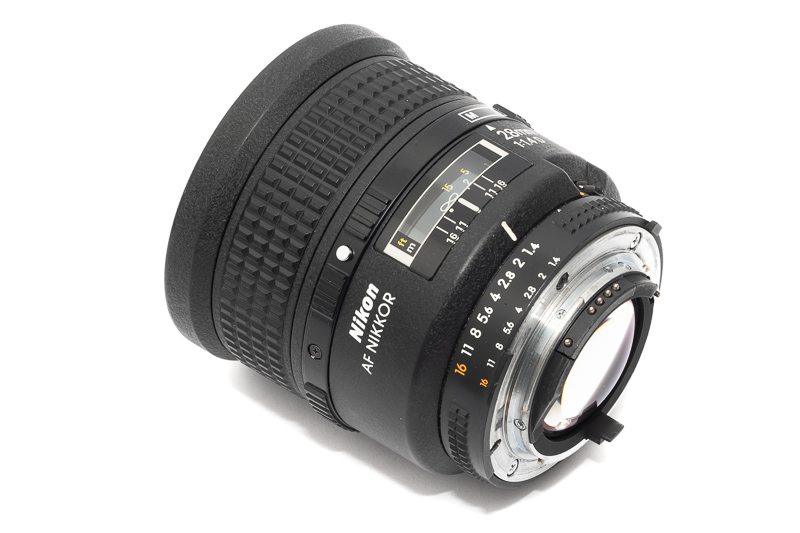
Fact is: by 2007 not a single prime lens shorter than 200mm (and that was the expensive and huge Nikon AF-S 200mm 2.0G VRI) had been updated to the AF-S standard. Not one. And it gets worse: from the introduction of F-mount AF lenses in 1986 to the introduction of this 24mm 1.4 in 2010, the only AF lens wider than 50mm and faster than f/2.0 was the rare and expensive Nikon AF 28mm 1.4D released in 1993.
You can read more about the history of the Nikon AF 28mm 1.4D here.
All the reportage and wedding photographers looking for a fast wide angle lens had to either use one of the aforementioned zooms – and accept being limited to f/2.8, try to find one of the rare Nikon AF 28mm 1.4Ds on the used market – and paying more for it than their flashy D3 to begin with, or use the less than spectacular, outdated Nikon AF 35mm 2.0(D).
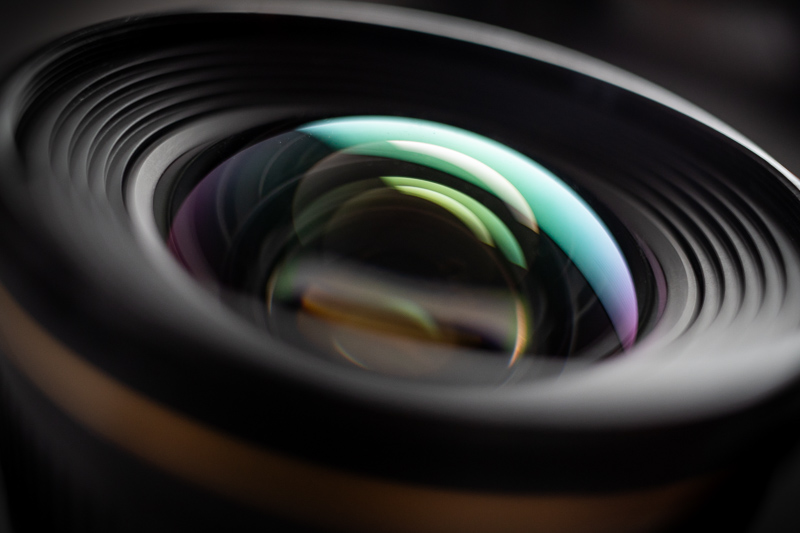
Then finally in January 2010, this Nikon AF-S 24mm 1.4G had been released as the first lens of Nikon’s line up of higher end f/1.4 primes. Later that same year the Nikon AF-S 35mm 1.4G and the Nikon AF-S 85mm 1.4G followed. Not only has this 24mm been a long awaited lens, among Nikon users it was also highly regarded at that time, offering vastly superior image quality compared to the Nikon AF 28mm 1.4D while even being a bit wider.
Handling/Build quality
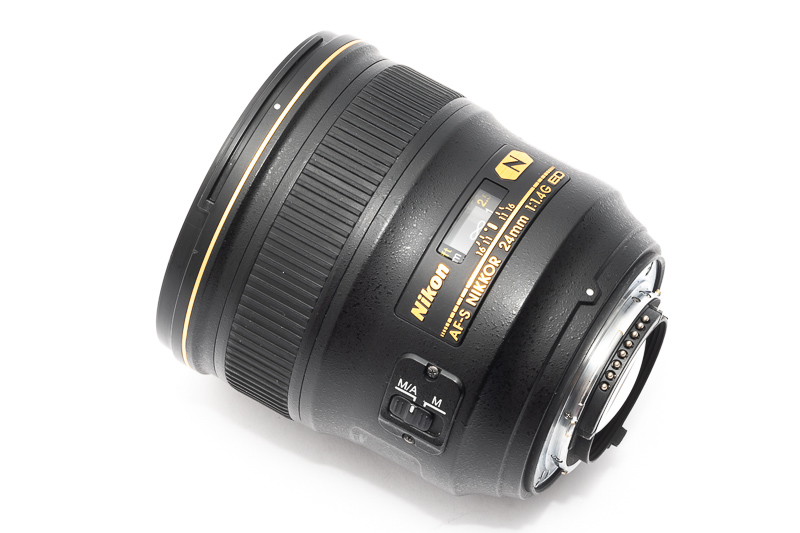
This Nikon AF-S 24mm 1.4G is part of Nikon’s higher end f/1.4 line up together with the 28mm 1.4E, 35mm 1.4G, 58mm 1.4G, 85mm 1.4G and 105mm 1.4E. All these lenses feature a very similar casing design.

The outer casing seems to be mostly made from high quality polycarbonate which is also true for the filter thread. There is a rubber gasket to be found at the bayonet.
The focus ring features a mechanical coupling to the helicoid (no focus by wire) and it takes about 120° from the minimum focus distance (0.25 m) to infinity.
The resistance is okay, not as nice as a real manual lens or some of Sigma’s better lenses.
Many Nikon AF-S G-lenses show some slack when changing the direction of rotation on the focus ring and this 24mm 1.4 is sadly one of them, therefore setting precise focus manually is not exactly an enjoyable experience.
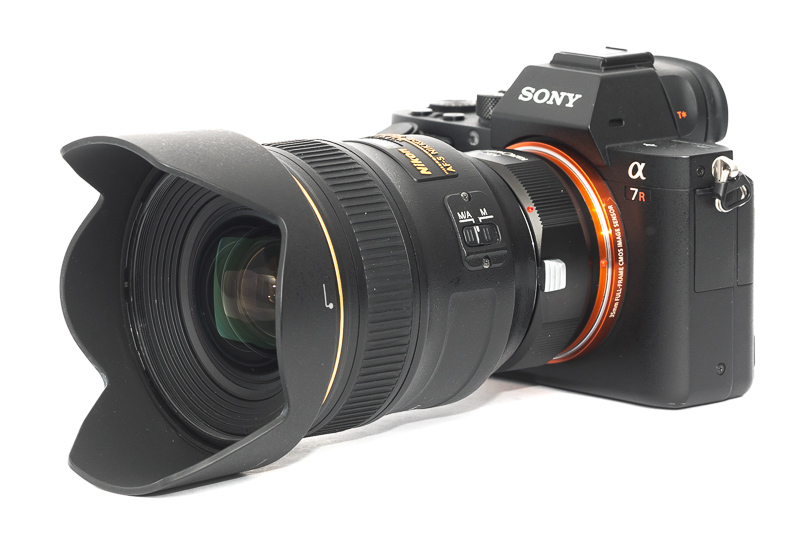
A plasticky bayonet type lens hood it also part of the package. It can be mounted reversed for transport.
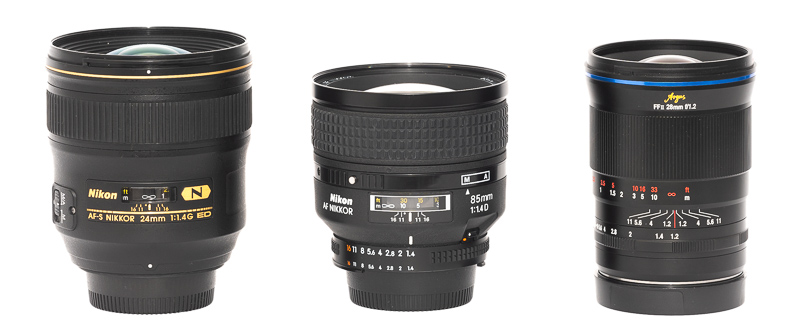
This Nikon AF-S 24mm 1.4G is not a small lens but also not as big as the later Nikon AF-S 28mm 1.4E. It is similarly sized as the Nikon AF 28mm 1.4D.
This is a “G” lens without aperture ring, but you can buy dumb adapters – that allow to change the aperture value – to adapt this as a manual focus lens to all kinds of mirrorless cameras.
If you want to make use of the AF on a Sony E-mount camera you need a fancier adapter. I tried the Commlite adapter in the past and that has been an awful experience. I can recommend the Monster LA-FE1 and LA-FE2 adapters though, both are compatible to this lens.
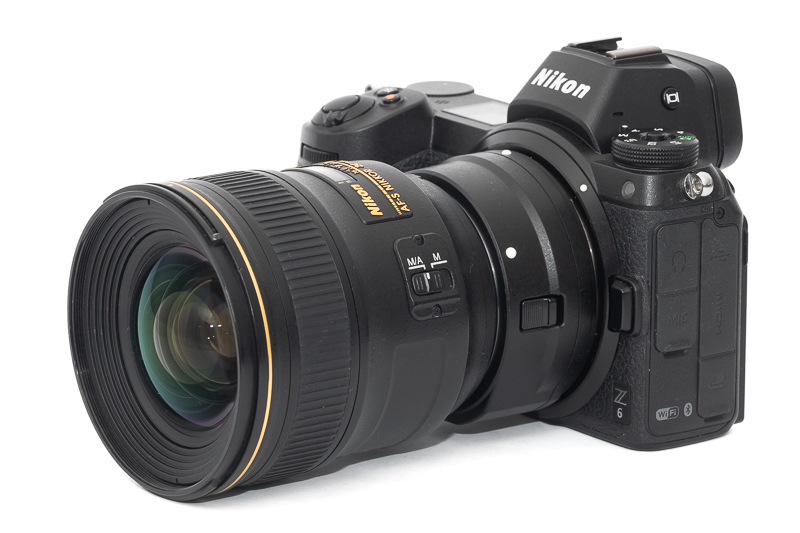
If you are a Z-mount user this lens also works perfectly via the FTZ adapters.
AF performance
When the f/1.4 AF-S primes hit the market some people were put off by their AF speed, as usually – especially when directly comparing the Nikon AF-S 85mm 1.4G to the Nikon AF 85mm 1.4D – the newer AF-S lens actually focused slower than the older screwdriven one. Nikon at that time claimed the AF-S f/1.4 prime lenses are geared towards higher focus accuracy instead of speed.
However, in my three years of using this lens on the D300, D700 and D800 I always found the AF to be snappy and most certainly fast enough for most applications.
On the Sony E-mount cameras this lens also focuses surprisingly well in AF-C mode via the Monster LA-FE1 and LA-FE2 adapters (not in video mode though).
Vignetting
light falloff
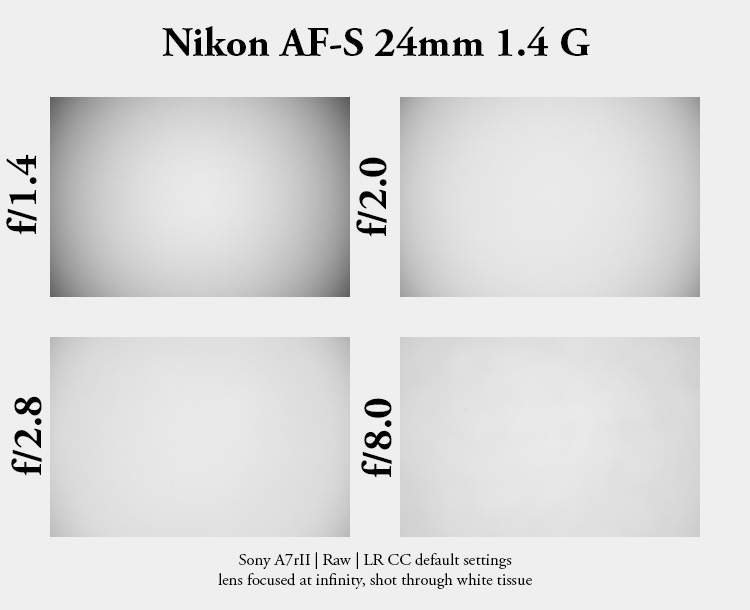
| f/1.4 | 2.9 EV |
| f/2.0 | 2.0 EV |
| f/2.8 | 1.5 EV |
| f/4.0 | 1.2 EV |
| f/5.6 - f/16 | 0.9 EV |
The vignetting values of this Nikon AF-S 24mm 1.4G are very similar to the Nikon AF-S 28mm 1.4E, the Sigma 28mm 1.4 Art and the Nikon AF-D 28mm 1.4 at shared apertures.
Recent mirrorless designs like the Sony FE 24mm 1.4 GM and the Samyang AF 24mm 1.8 FE also show similar vignetting values at their maximum aperture, but perform about 1 EV worse stopped down.
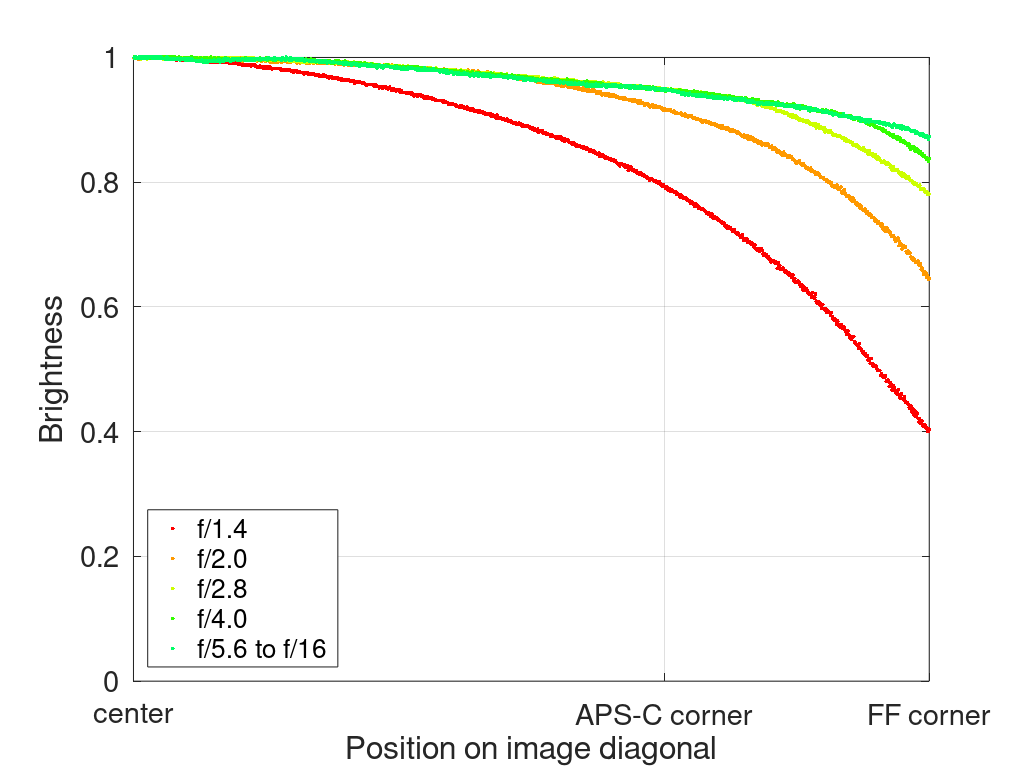
It is recommended to have a look at this article first to get an idea how this brightness graph works.
optical vignetting
Fast lenses usually show a noticeable amount of optical vignetting. Without going too much into technical details optical vignetting leads to the truncation of light circles towards the borders of the frame.
In the center of the frame almost every lens will render a perfect circle, but only lenses with very low optical vignetting will keep this shape in the corners.
So in the following comparison we move from the center (left) to the extreme corner (right) and see how the shape of the light circle changes.
I shot both lenses set to 0.3 m focus distance, but not side-by-side, so the size of the circles is not directly comparable.
Optical vignetting is generally well behaved and here this Nikon and the Sony FE 24mm 1.4 GM perform very similar, the main difference being that the Sony creates slightly rounder highlights when stopped down to f/2.0.
Also both lenses make use of aspherical elements and can therefore show onion ring structures in out of focus highlights.
Sharpness
MTF-Graphs
For its time the MTF graphs of this Nikon AF-S 24mm 1.4G look decent to good. High contrast and resolution in the central part of the frame but some astigmatism towards the corners and a generally significant drop in performance in the corners.
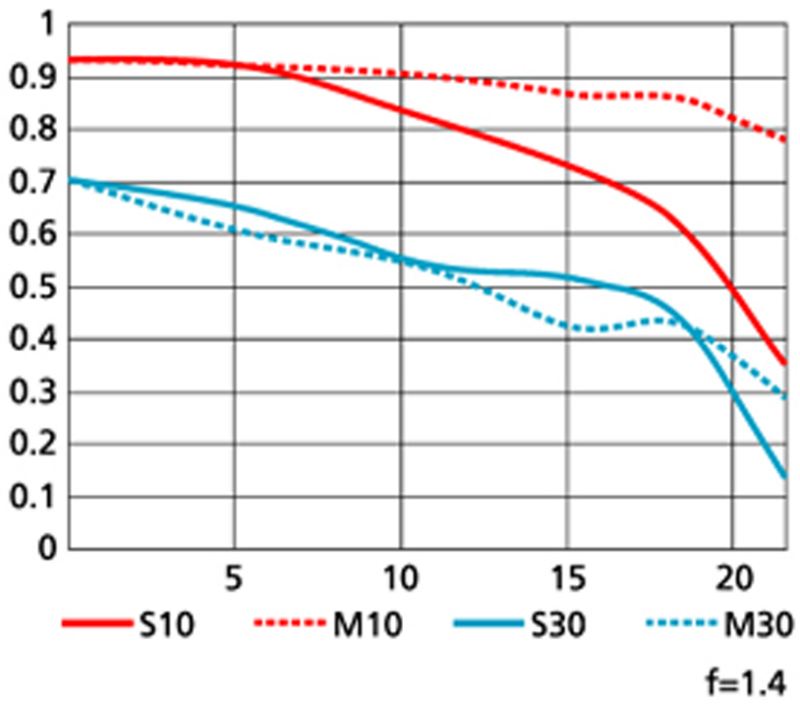
These MTF-Graphs usually show calculated values that do not take into account manufacturing tolerances and sample variation. Furthermore they are usually calculated for infinity, so in the field and shooting at different distances a noticeable variation may be visible.
Thanks to Lensrentals.com we have some data of actual lenses though and I thought it might be a good idea to compare these graphs to those of the Nikon AF-S 28mm 1.4E from 2017 and the Sony FE 24mm 1.4 GM which was released in 2018:
We see a few interesting things here. First thing: for the 10 lp/mm (contrast) the actual lenses seem to perform better than Nikon shows in their calculated values thanks to way less astigmatism. I don’t have an explanation for that.
The 30 lp/mm (resolution) graphs look similar, as both show a bit of a midzone dip. Interestingly also here the averaged out measured samples look better than Nikon’s calculated graphs.
Comparing the Nikon to the Sony, there is no discussion: the Sony looks better everywhere in the frame at infinity. It also has less astigmatism and simply a more even performance with seemingly no field curvature.
The Nikon AF-S 28mm 1.4E (released in 2017) shows even better performance than the Sony FE 24mm 1.4 GM (released in 2018). In those years a lot has happened. The high resolution camera sensors led to higher demands when it comes to the resolving capabilities of lenses and the shift to mirrorless allowed to design smaller lenses that are more capable than the bigger ones from just a few years before.
Focus Shift
With some lenses on stopping down the focal plane shifts to the front or back, which can be an issue on (D)SLRs, as here the focus is usually obtained with the lens set to its maximum aperture.
This Nikon AF-S 24mm 1.4G is one of those lenses. In the field at longer focus distances I don’t think this will create any issues though, as even at 0.25 m the target never really drops out off the focal plane.
infinity (42mp Sony A7rII)
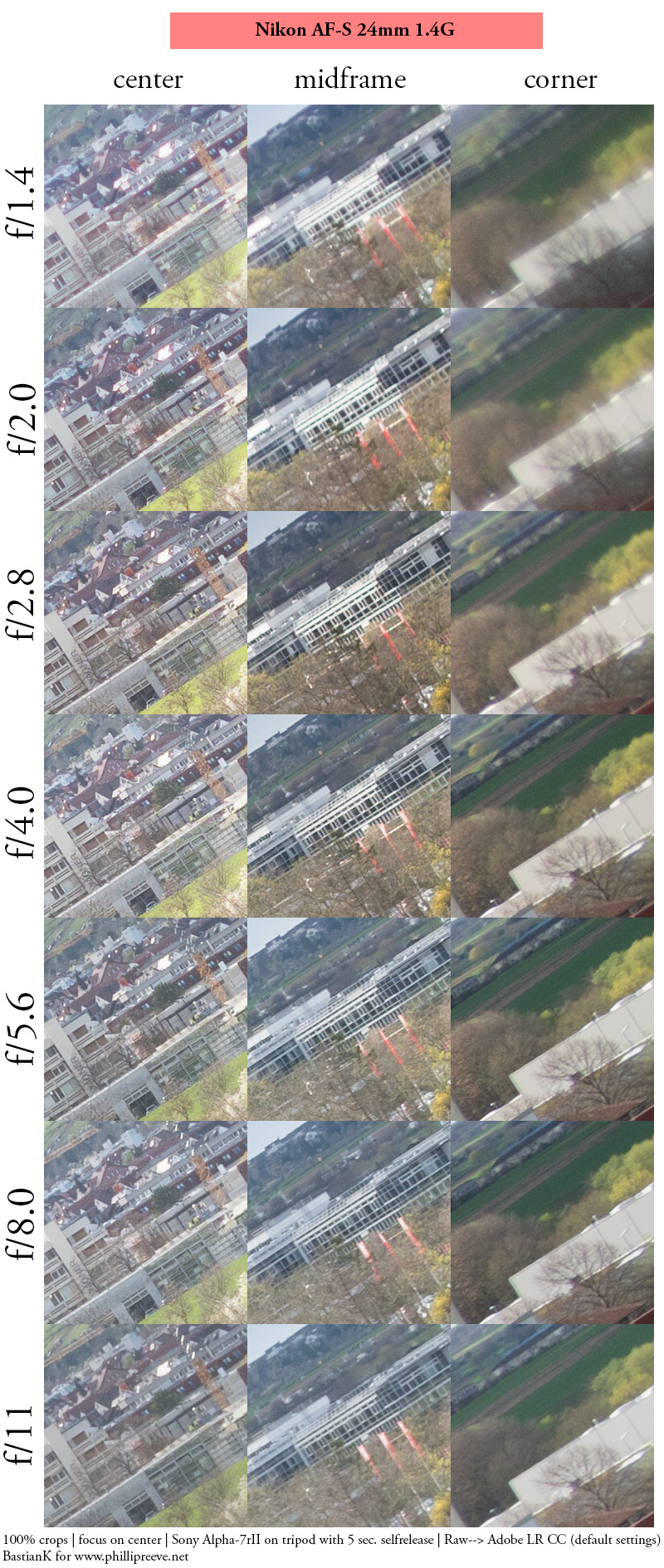
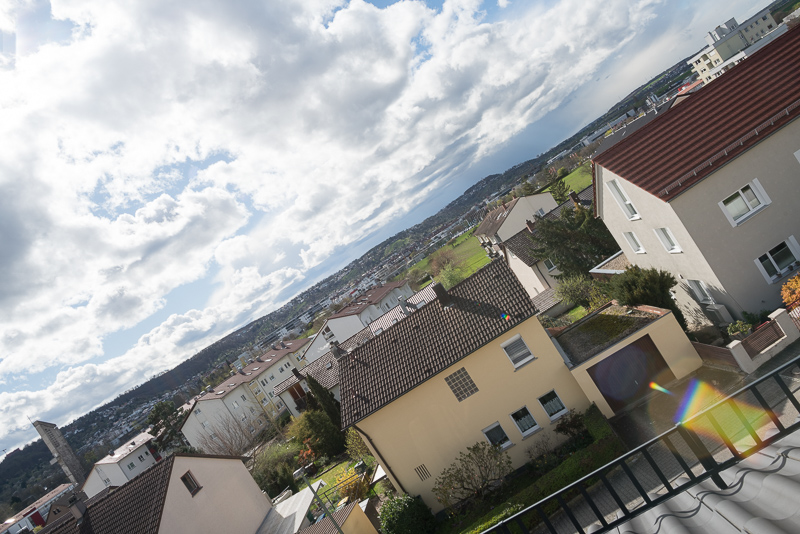
The center is a bit softer at f/1.4 but already looks good from f/2.0. Compared to the Nikon AF 28mm 1.4D the midframe looks pretty decent already at f/1.4 and very good from f/2.8. As the MTF graphs promised, the corners at wider apertures are nothing to write home about. Peak across frame performance is reached by f/5.6.
In 2010 this was the highest resolving 24mm lens you could attach to your Nikon DSLR. Now in 2024 the Sony FE 24mm 1.4 GM easily outperforms it and looks about as good at f/1.4 as this Nikon stopped down (same is true for the Nikon AF-S 28mm 1.4E as well). Also the compact Samyang AF 24mm 1.8 FE performs on a similar level between f/1.8 and f/8.0.
portrait distance (0.9 m, 42mp Sony A7rII)
For portraiture it isn’t so important how flat the field is, it is more interesting to see what the sharpness is like when focused at different parts of the frame to take field curvature out of the equation.

This is what I did here, I refocused for every shot and aperture to get the best possible result at different locations in the frame (center, inner midframe and outer midframe).
Focus distance was roughly 0.9 m and the circle of the dollar bill is more or less the size of a human eye.
f/1.4 <————> f/2.0
Nikon’s engineers seem to have put some empasis on the performance in this category, as this Nikon AF-S 24mm 1.4G is doing a very good job here. The performance at this distance is actually very similar to the Nikon AF-S 28mm 1.4E thanks to well corrected Astigmatism already at f/1.4.
close (0.25 m, 1:5.2, 42mp Sony A7rII)
As you can also see from some of the samples, this lens focuses really close. Using a high resolution camera and having a look at 100% crops it looks a bit soft at f/1.4, but the good news are that field curvature is corrected surprisingly well, so the edges look only slightly worse than the center. If you ever wanted to take close up pictures of a flat object with a 24mm lens…
Flare resistance
As always evaluating flare is a complex matter since you can get any lens to look bad if you push it hard enough and a slight change of scenario can affect results a lot.
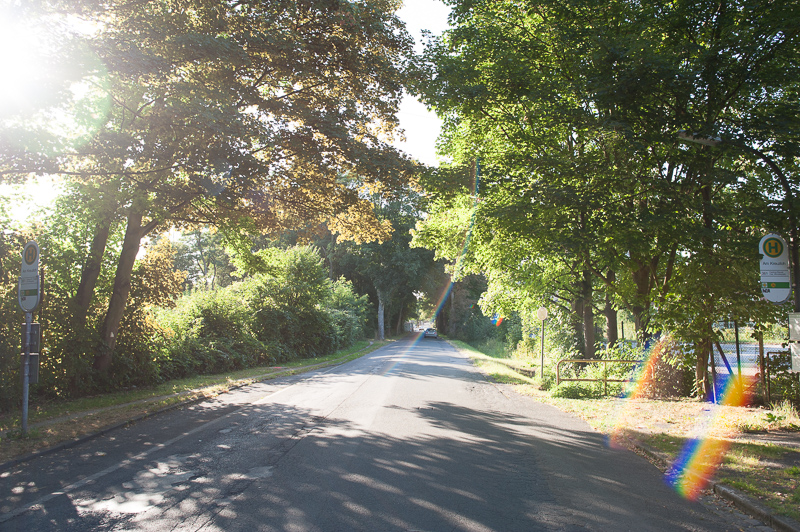
This Nikon AF-S 24mm 1.4G was one of the first lenses to feature Nikon’s fancy “Nano coating”. Personally, I consider it one of the better coatings, as it generally keeps contrast on a high level, even in backlit scenarios – something I cannot say about the previous Nikon AF 28mm 1.4D.
However, especially stopped down there are a bunch of artefacts you may encounter with a strong light source inside or outside the frame:
At the maximum aperture the situation is a bit better. Some artefacts are still there, but they are usually not so obvious that they will ruin your shots:
Having taken around 8.000 pictures with this lens, there were not a lot with lens flare issues among them. I actually took a lot of pictures like these with the sun in the frame and no issues whatsoever:
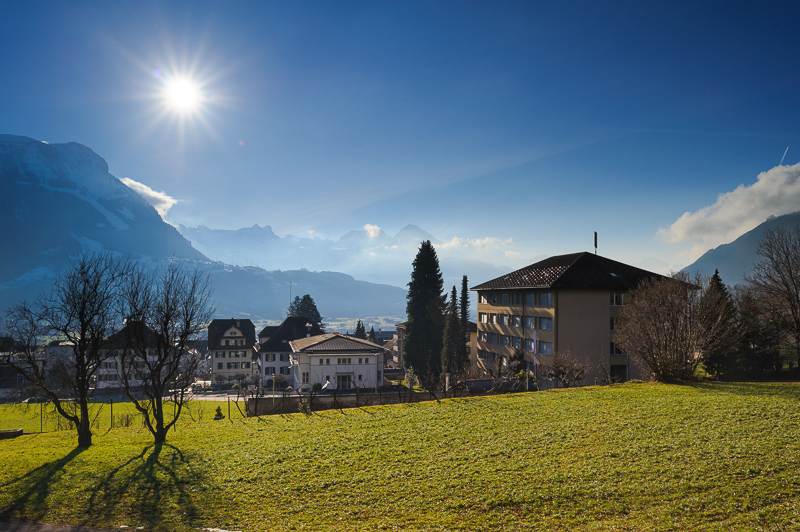
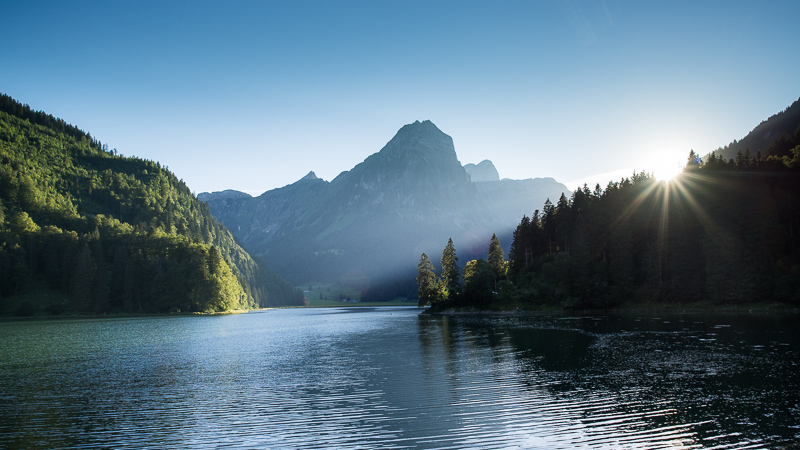
So I tend to say it might look a bit worse in these staged scenarios than it actually performs in the field. The Sony FE 24mm 1.4 GM also has some issues in this category, the better performers are the Samyang AF 24mm 1.8 FE and the Nikon AF-S 28mm 1.4E.
Coma
For (D)SLRs there hasn’t been a single 24mm 1.4 lens that is actually well corrected for Coma at wider apertures. The manual focus Samyang 24mm 1.4 is probably the best, followed by the Sigma 24mm 1.4 and the Canons and this Nikon are the worst.
Looking at Nikon’s f/1.4 wide angle lenses, the AF 28mm 1.4D is the worst (and oldest), the AF-S 28mm 1.4E is the best (and newest) and this AF-S 24mm 1.4G sits inbetween.
I did use this lens for some astrophotography and here things actually don’t look as bad at f/1.4. I often used f/2.0 for a more even exposure (less vignetting) and less Coma for astro and blue hour shooting though.
Distortion
The Nikon AF-S 24mm 1.4G shows a low amount of slightly wavy barrel distortion. A correction profile in Lightroom is available that does a very good job at correcting it.
Bokeh

Traditionally fast wide angle lenses were not exactly known for their pleasing rendering of out-of-focus areas. This Nikon AF-S 24mm 1.4G is a different story though, as it has been praised by many owners and reviewers for its pleasing bokeh. Does this still hold true today? Let’s have a closer look.
Close distance

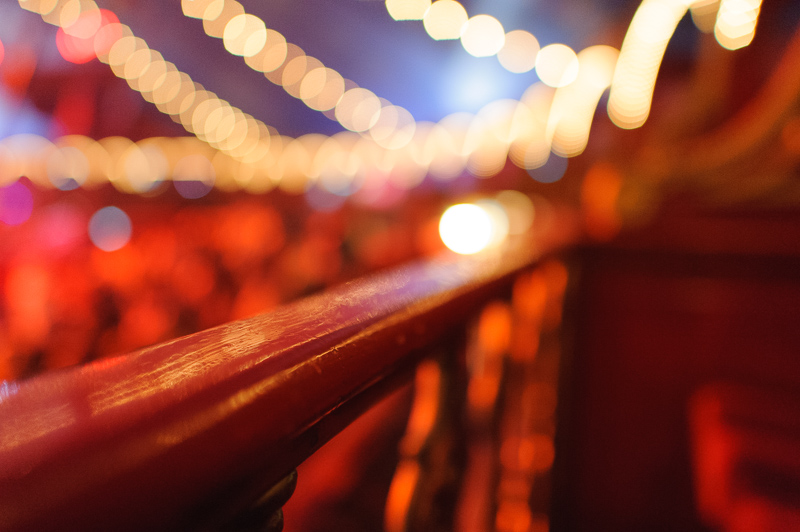


The short minimum focus distance of 0.25 m of course helps creating a thin DoF here. Nikon has always been pretty good with their floating elements designs in wide angle lenses and also here that led to good sharpness and contrast at these distances, which really helps with creating an impression of depth.
Mid distance


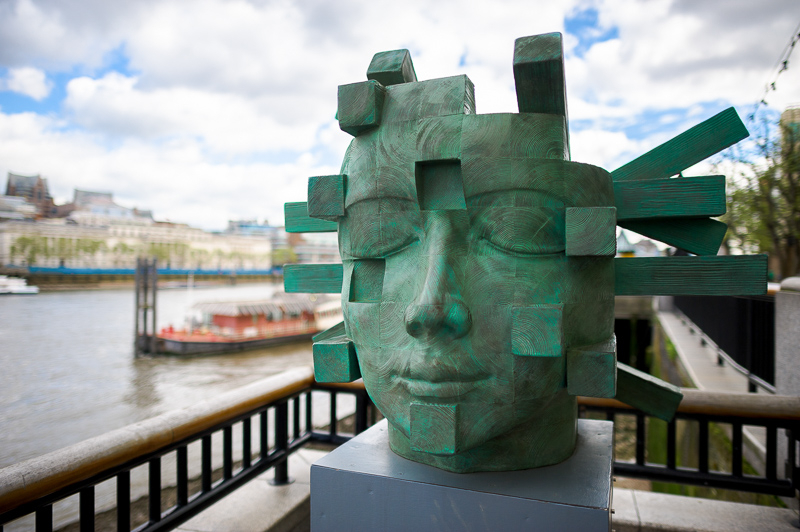

Compared to 28mm and 35mm lenses you need to be a bit more careful with your composition here – especially where you place persons and faces. With fast 24mm lenses many people are tempted to get too close to the subject (to get more bokeh) or placing the subject too close to the edge of the frame – both resulting in unnatural proportions. In some cases (like the last sample above) this effect can also be used for artistic purposes though.
Long distance




At longer focus distances a wide angle lens will simply not yield as much bokeh as a longer lens with the same maximum aperture, but this is actually the strength of fast wide angle lenses: creating an impression of depth while still retaining enough background information to tell a story about the subject. This is why a fast wide angle lens is what you will find attached to my camera most of the time. For further reference see: How to: Create Environmental Portraits.
Personally, I find the bokeh this lens draws very appealing. As it is also slightly undercorrected for spherical aberration, it actually reminds me a bit of the Sony FE 85mm 1.4 GM, but use the sample images to judge for yourself.
Sunstars
When it comes to 9 rounded aperture blades I have already seen good and bad sunstars from Nikon. While their later F-mount lenses (like the Nikon AF-S 28mm 1.4E) do pretty good, this one doesn’t, as you can also see from the samples throughout this review. In blue hour scenes with small point light sources they still look okay when the lens is stopped down a lot though.
If you want to learn more about this topic have a look at this article.
Chromatic aberration
lateral
When reviewing the Nikon AF 28mm 1.4D I was a bit surprised that Nikon did not use any ED elements for it, resulting in rather strong lateral CA. Now this Nikon AF-S 24mm 1.4G does feature two ED elements, but lateral CA are still on a rather high level. Luckily also here the digital correction in post is doing a good job at getting rid of this aberration.
longitudinal
If you read some of my other reviews of Nikon’s f/1.4 AF-S lenses you already know: correcting longitudinal CA has not been the number one task of Nikon’s optical engineers during the AF-D and AF-S era. And that is definitely true for this 24mm 1.4G as well. It actually reminds me of some of the early Sony FE lenses (e.g. the 55mm 1.8 ZA or the 35mm 1.4 ZA), as those also showed strong green and magenta outlining in the out of focus areas.
Among all the pictures I took with this lens the one above is definitely a worst case scenario. Here I attempted to get rid of the green outlining in Lightroom and that worked very well, but this will not be the case for every picture.
Also purple fringing can be an issue at wider apertures. Here the newer Nikon AF-S 28mm 1.4E shows a slightly better performance.
Conclusion
good
|
average
|
not good
|
Let me first tell you about my personal history with this lens. I bought it in 2012 and first used it as a 36mm 2.0 equivalent on my APS-C Nikon D300. When a used fullframe D700 became affordable, I replaced my D300 with it, also to finally be able to use this 24mm 1.4 to its full potential.
From 2012 to 2014 the Nikon AF-S 24mm 1.4G ended up being my most used lens. I took a lot of pictures with it and some I am really fond of to this day. What happened after that? Nikon released the AF-S 20mm 1.8G in 2014 and I bought in on release day. It was wider, smaller, lighter, cheaper, created nicer sunstars and corrected Coma better. As I was very interested in astro and blue hour photography at that time, selling the 24mm 1.4 and buying the 20mm 1.8 was a no-brainer for me.
Between 2010 and 2020 photography lenses got so much better. In 2010 this Nikon AF-S 24mm 1.4G was considered the best 24mm fullframe lens money can buy. A few years later – with the release of the Sigma 24mm 1.4 Art DG HSM, Nikon AF-S 24mm 1.8G and especially the Nikon AF-S 28mm 1.4E – it was already considered outdated by many reviewers.
But is this really true? That depends a bit on what you are looking for. If astrophotography is what you are interested in, by all means get one of the newer lenses that corrects Coma really well from wide open.
But if you are looking for a 24mm 1.4 lens that draws a very nice bokeh and performs well at portrait distances, this Nikon lens still has some undeniable qualities.
buy from Amazon.com | Amazon.de | B&H | ebay.com | ebay.de (affiliate links) for $1.999 (new) or $550+ (used)
Alternatives
Sony FE 24mm 1.4 GM:
In 2024 this is the gold standard when it comes to 24mm 1.4 lenses. Not only is it the smallest lens with these parameters, it is also the best performing in terms of Coma correction and sharpness. It is a true mirrorless design, so the only camera systems you can use it on are Sony E or Nikon Z via adapter. The only category I can think of where this Nikon performs better is stopped down vignetting.
buy from amazon.com | amazon.de | B&H | ebay.com | ebay.de (affiliate links) for $1298
Sigma 24mm 1.4 Art DG HSM:
This Sigma has also been designed for DSLRs and comes in F-mount as well, so it is a direct competitor. It came out after the Nikon and according to several tests it performs better with regards to sharpness. It has slower AF and doesn’t do any better when it comes to Coma correction, vignetting and flare resistance though. Without a direct comparison I don’t know for sure which lens creates the nicer bokeh, but my money is on this Nikon.
buy from Amazon.com | Amazon.de | B&H | ebay.com | ebay.de (affiliate links) for $849 (new) or $400 (used)
Sigma 24mm 1.4 Art DG DN:
Sigma’s updated mirrorless version of the aforementioned lens. I haven’t used it personally yet, but it seems to be a solid performer. Personally I would rather go for the smaller, lighter and closer focusing Sony FE 24mm 1.4 GM though.
buy from Amazon.com | Amazon.de | B&H | ebay.com | ebay.de (affiliate links) for $799
Samyang AF 24mm 1.8 FE:
I was positively surprised by this Samyang lens. If you are okay with a maximum aperture of f/1.8 instead of f/1.4 and/or you are on a budget this is a great option. It is also smaller and noticeably ligther than all the f/1.4 lenses mentioned before. Sadly sample variation is once more an issue, so better stick to offers where you can test the lens or return it if you are not happy with it.
buy from Amazon.com | Amazon.de | B&H | ebay.com (affiliate links) for $399
Nikon Z 24mm 1.8 S:
If you are a Z-mount user this is your native high performance 24mm 1.8 option. Just have a look at Martin’s review to find out more about it. Like all of Nikon’s f/1.8 S series lenses this is a bit on the pricey side though.
buy from Amazon.com | Amazon.de | B&H | ebay.com | ebay.de (affiliate link) for $896
Viltrox 24mm 1.8 AF:
As an E-mount user I don’t find this lens particularly appealing compared to the Samyang AF 24mm 1.8 FE. This Viltrox is heavier, similarly priced and performs worse in some categories (especially bokeh). For Nikon Z-mount users this is currently the only affordable 24mm 1.8 AF lens though.
buy from manufacturer’s store (use the code “PRnet” for 8% discount) | B&H | amazon.com | amazon.de (affiliate links) for $379
Sample Images

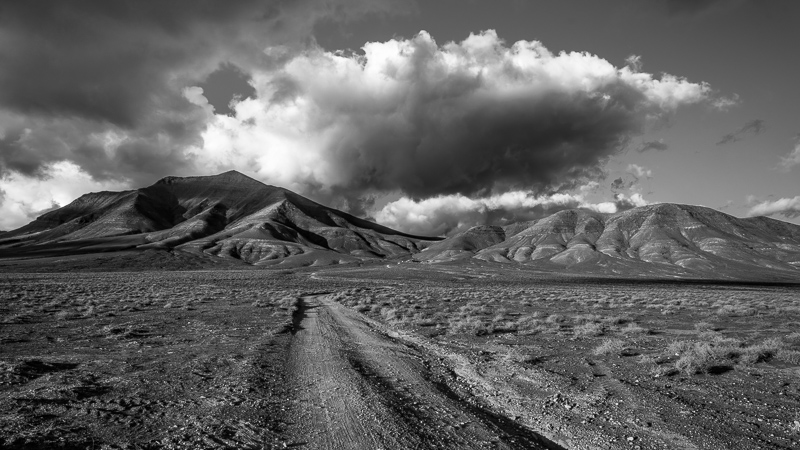



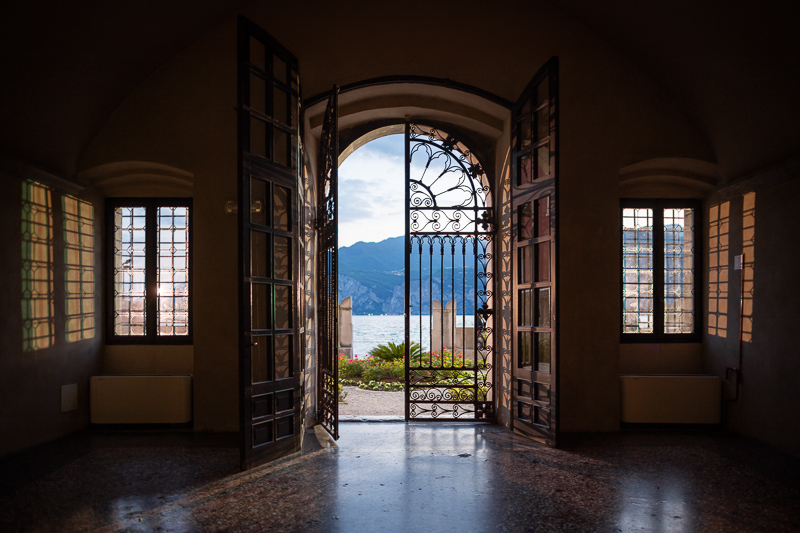
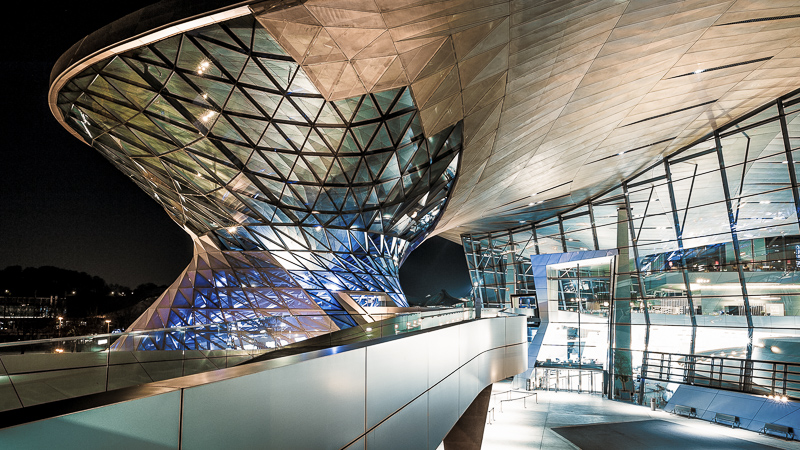
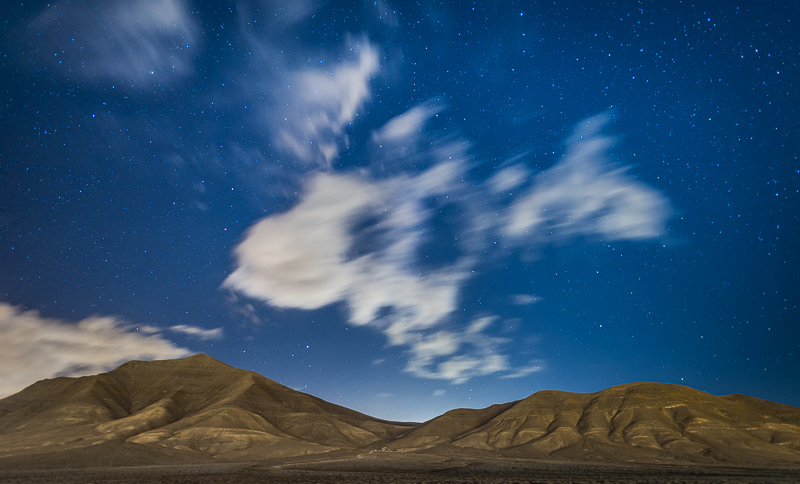
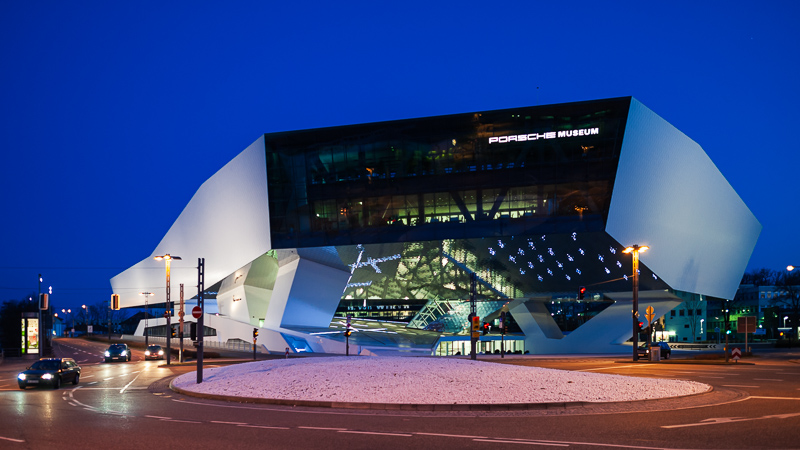
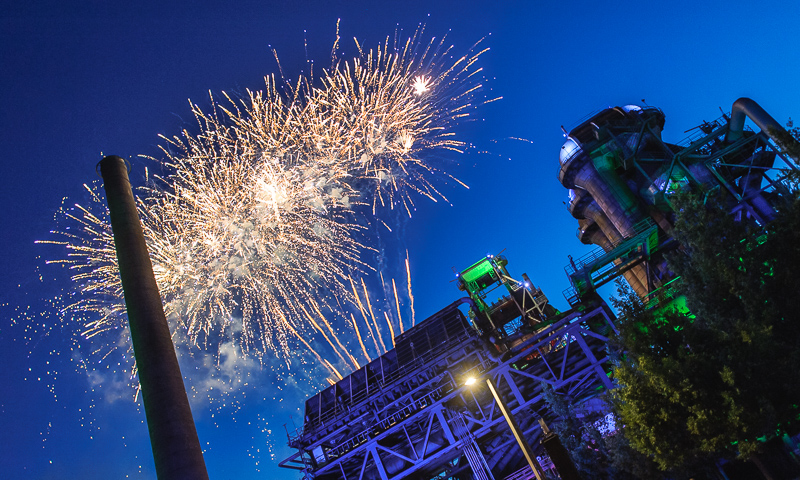
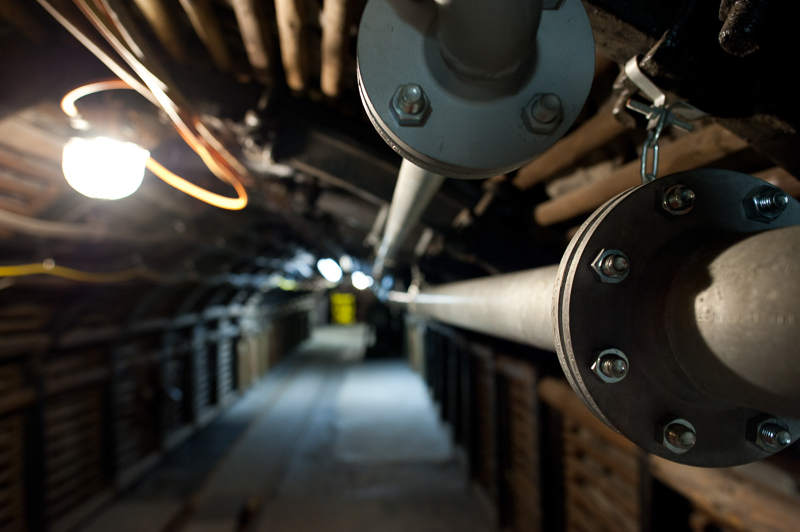
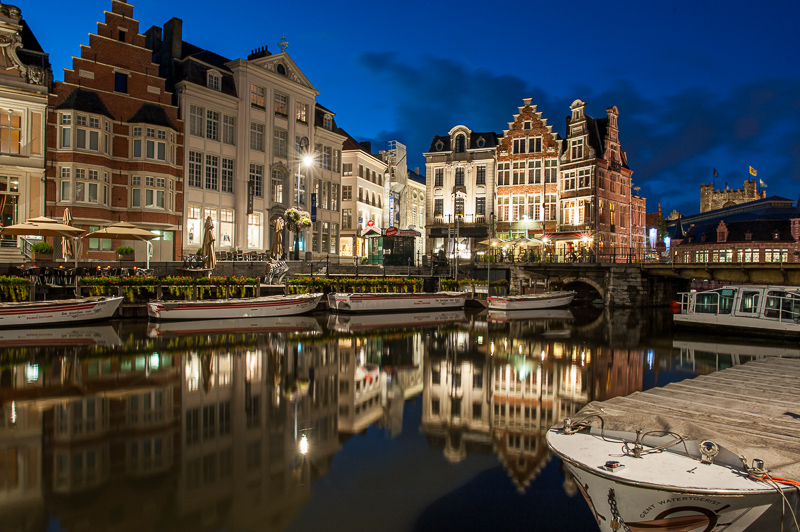


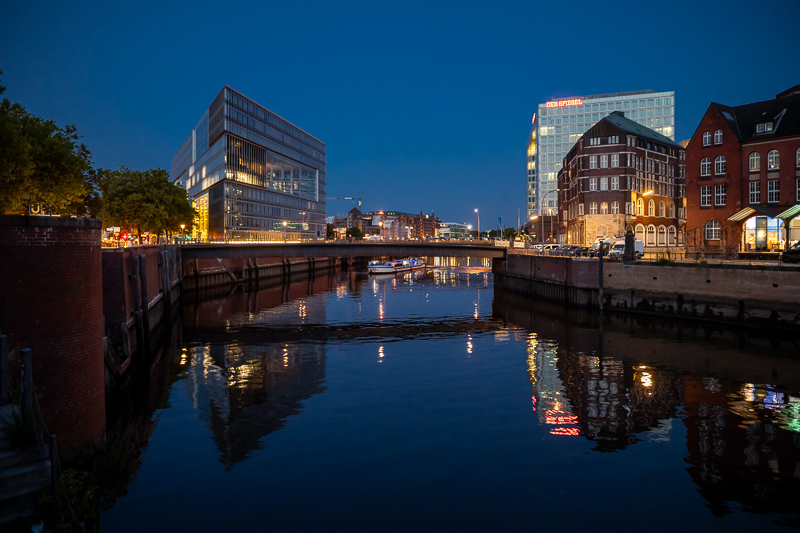
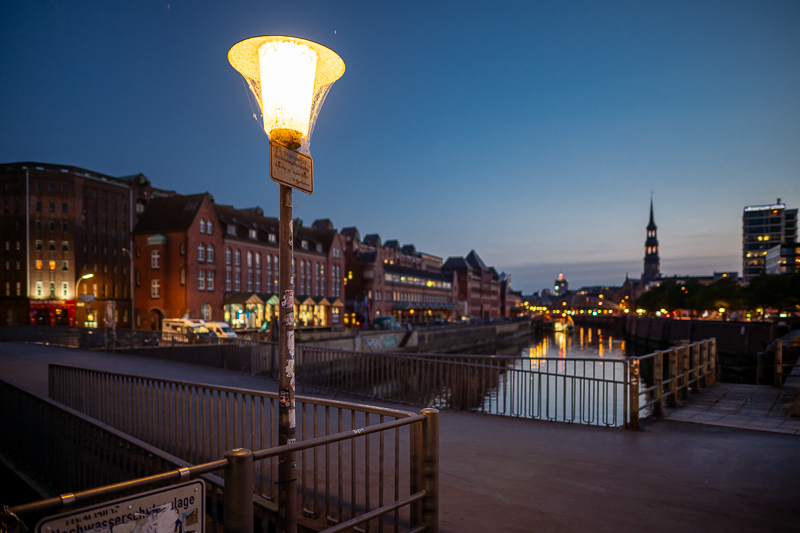


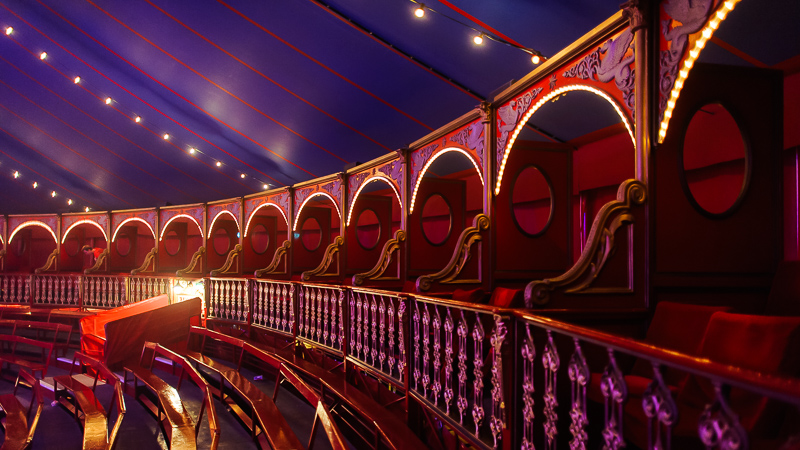



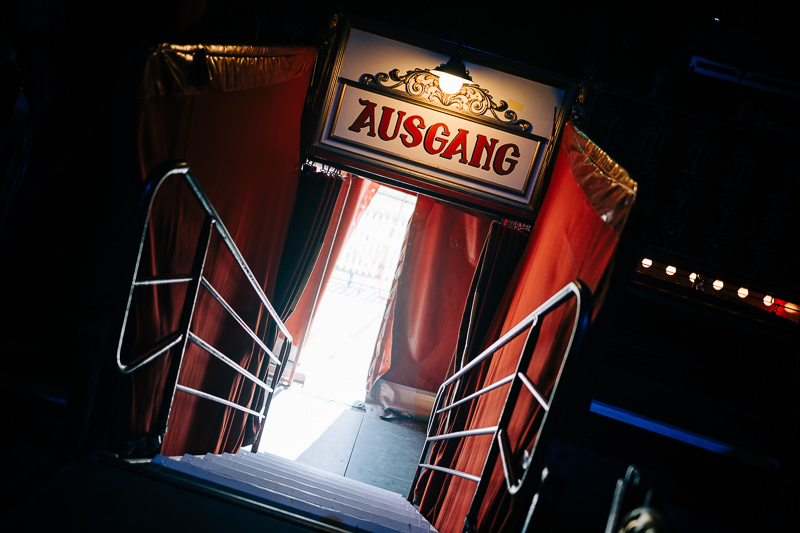
You can find many of the sample images in higher resolution here.
Further Reading
- Guide to 20-28mm wide angle lenses for Sony FE cameras
- Reviews of Nikon Lenses
- Review; Laowa 10mm 2.8 AF
- Review: Sigma 35mm 1.2 Art DG DN
- Technical Knowledge
Support Us
Did you find this article useful or just liked reading it? Treat us to a coffee!
![]()
![]()
![]() via Paypal
via Paypal
This site contains affiliate links. If you make a purchase using any of the links marked as affiliate links, I may receive a small commission at no additional cost to you. This helps support the creation of future content.
Latest posts by BastianK (see all)
- Review: Zeiss Milvus 25mm 1.4 Distagon - December 13, 2025
- Vivo X200 Ultra – The Death of the compact Camera - December 9, 2025
- The Rated list of the fast Nikon AF-S f/1.4 | f/1.8 | f/2.0 F-mount Primes - December 6, 2025




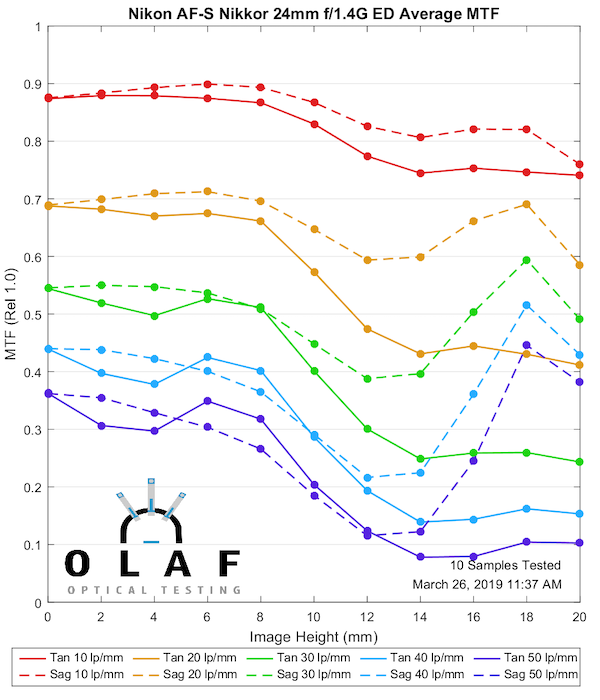
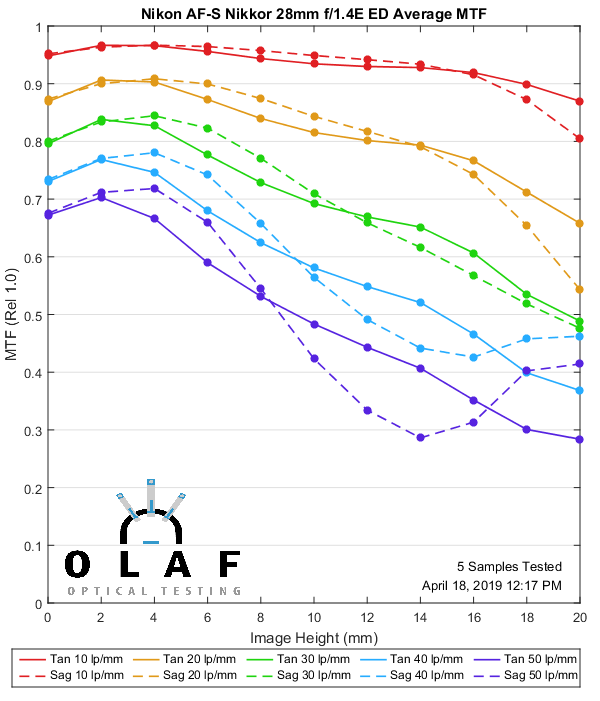
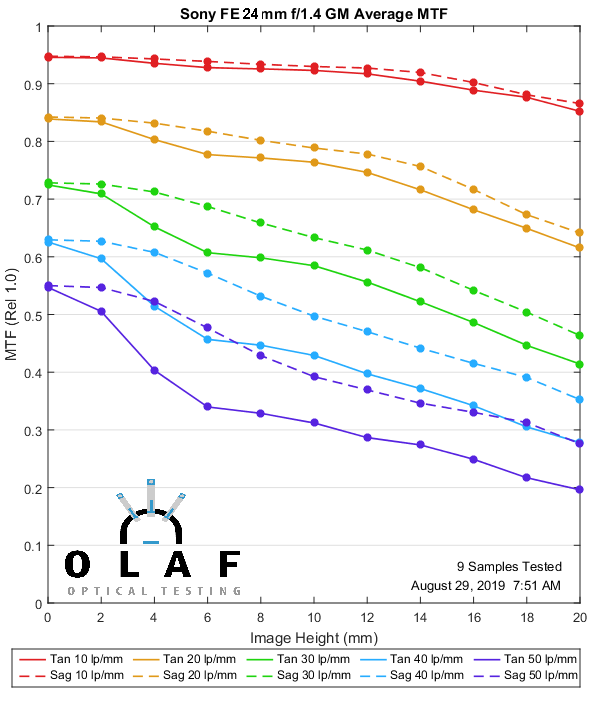
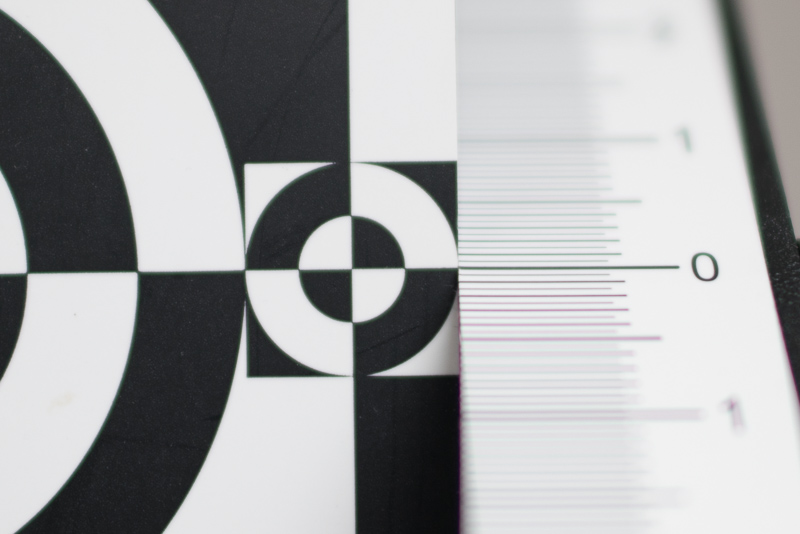
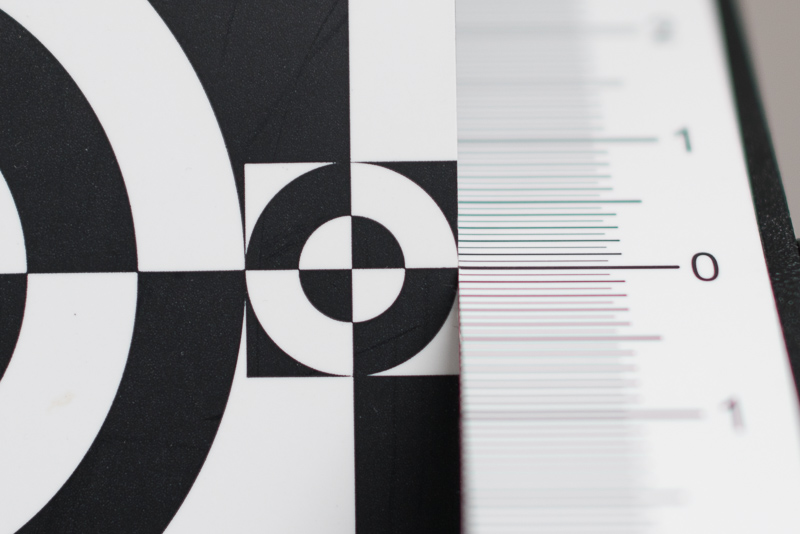
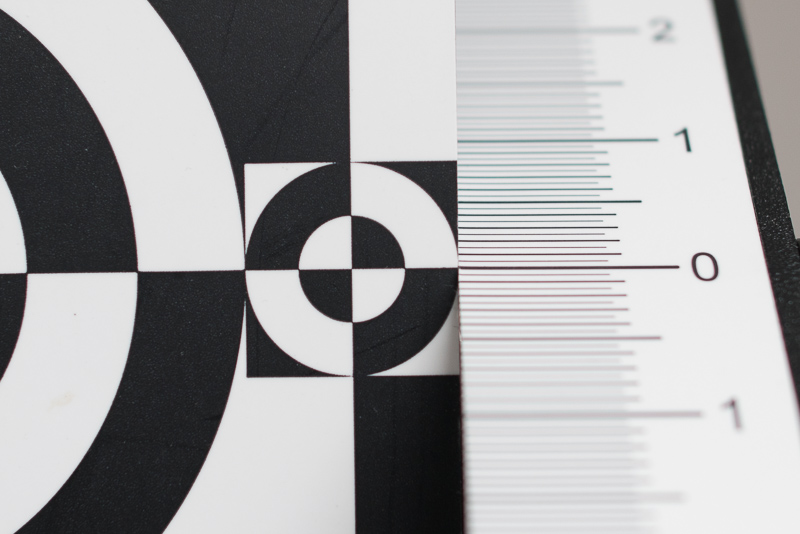
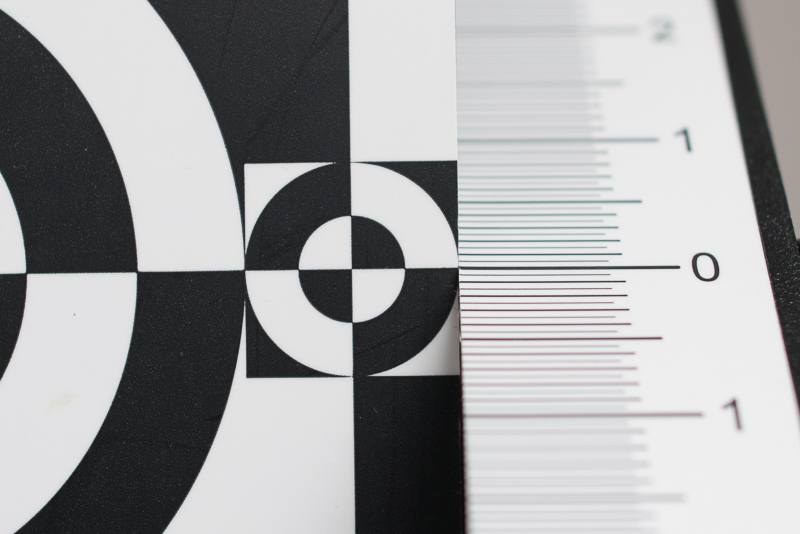
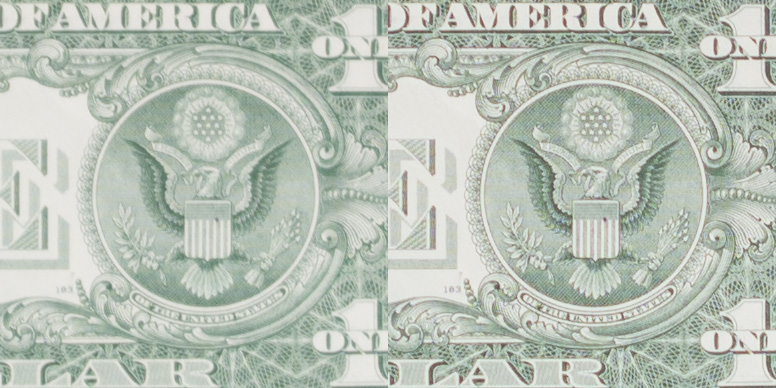
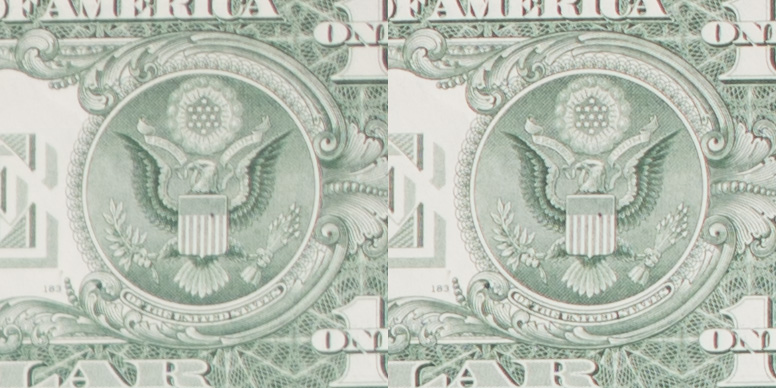
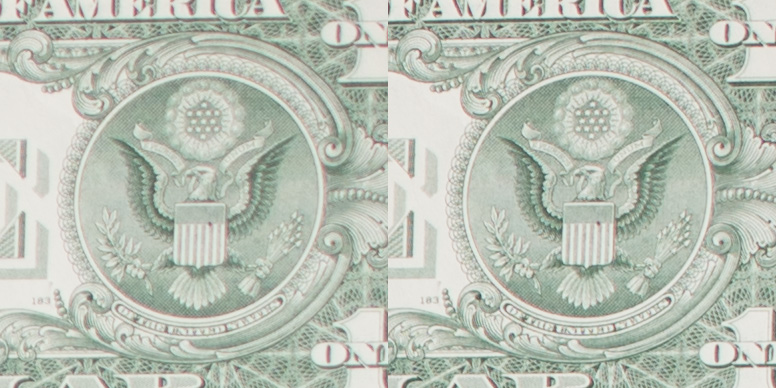




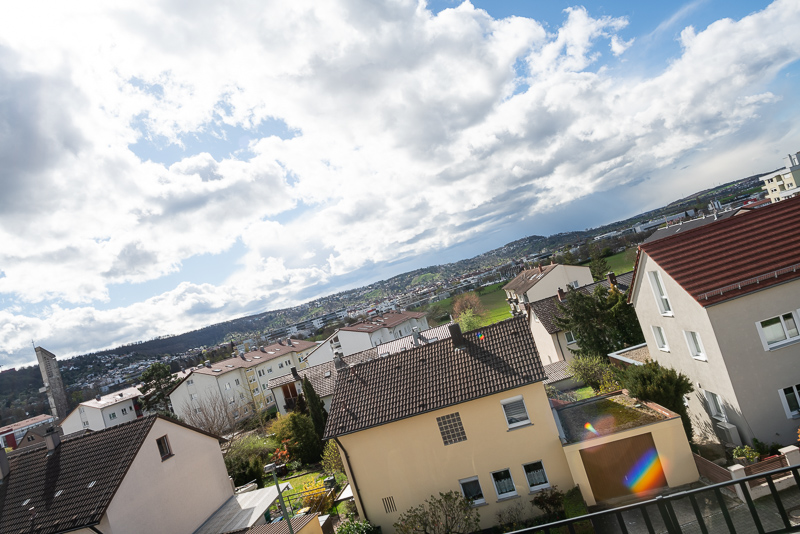
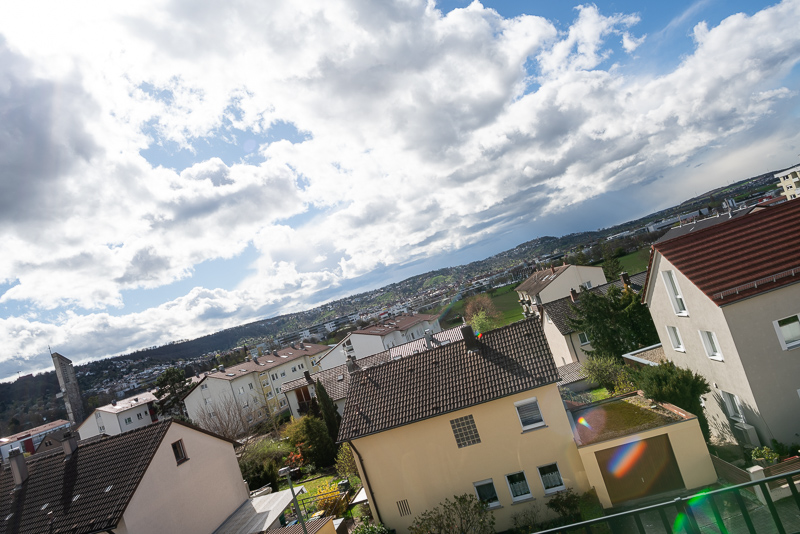
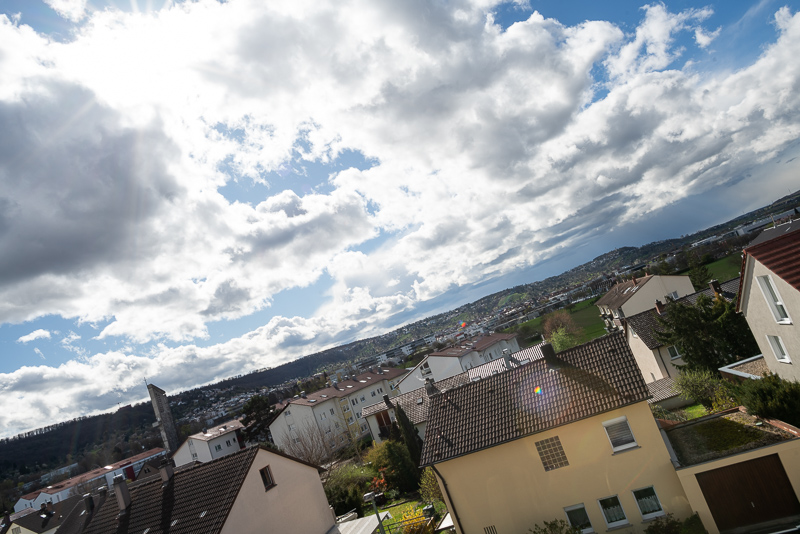
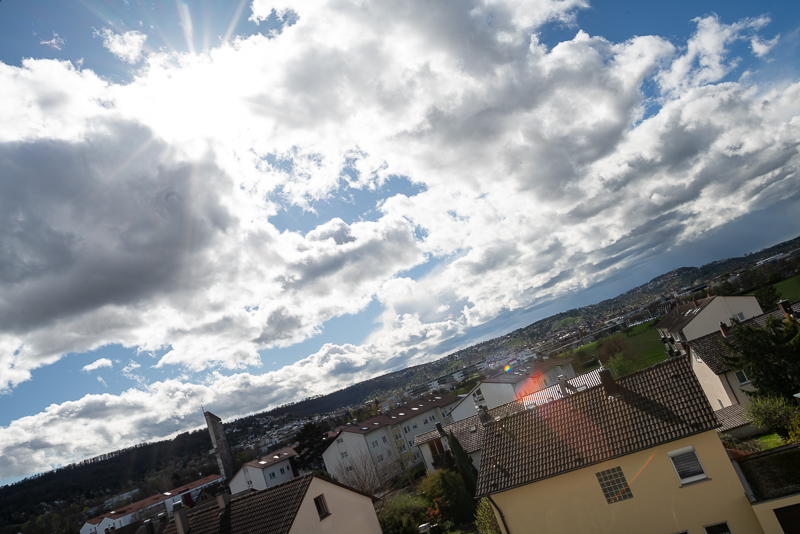

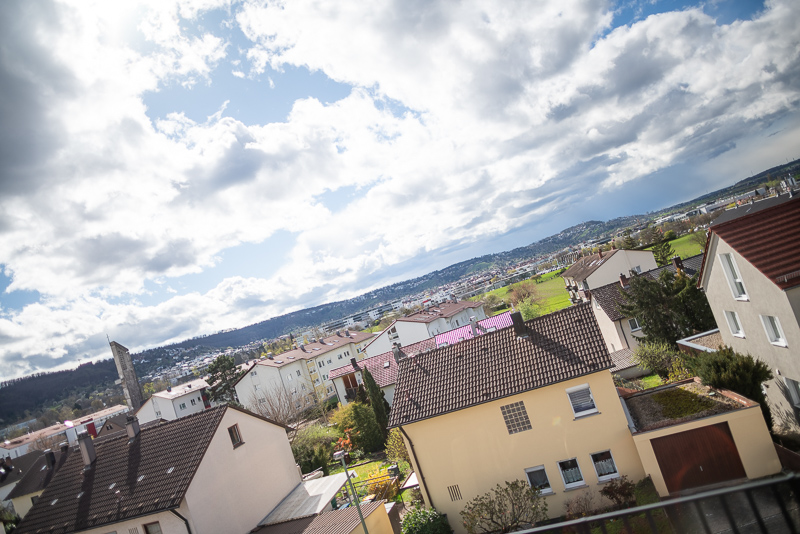
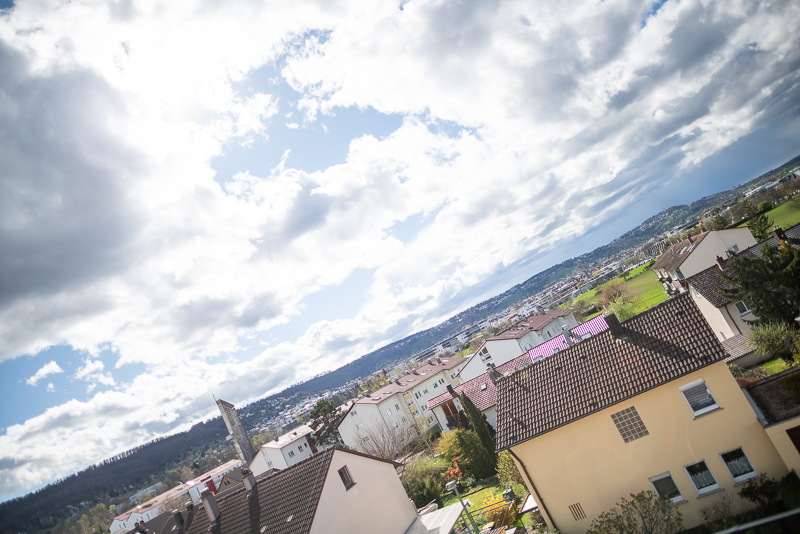
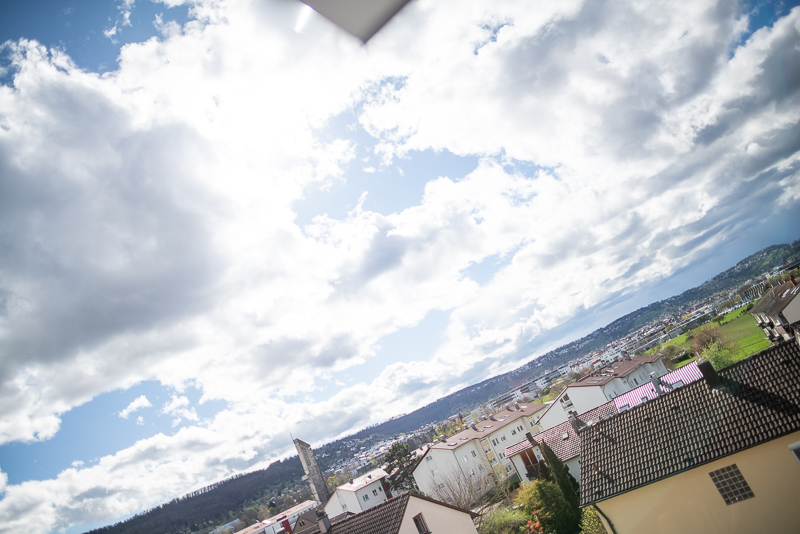
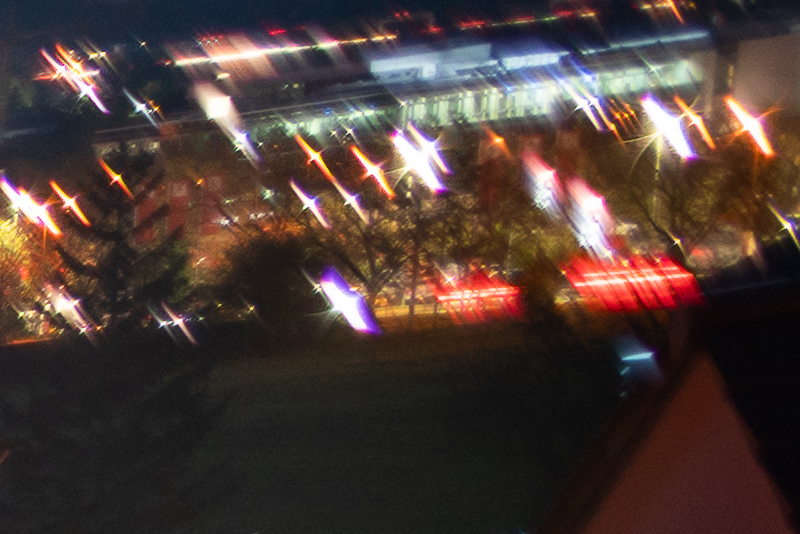
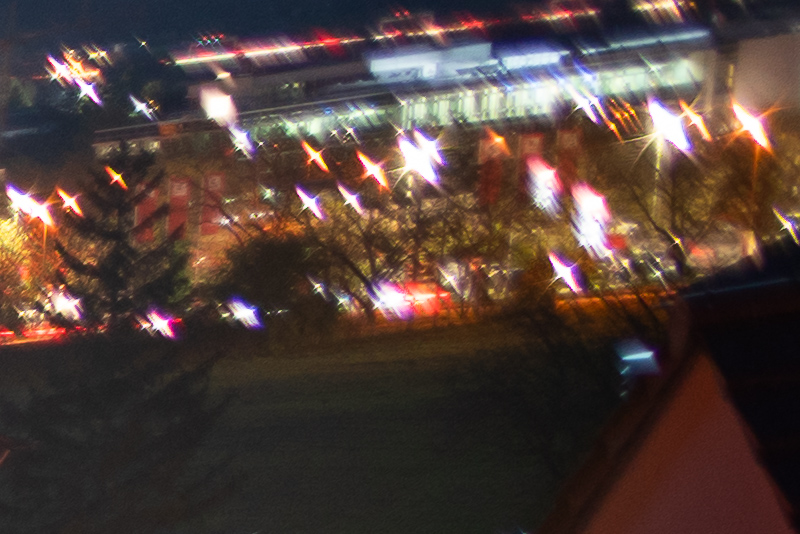
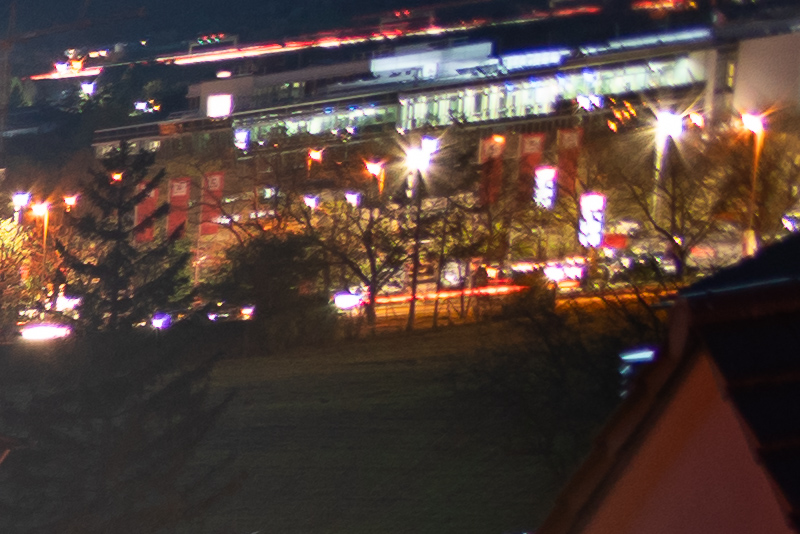
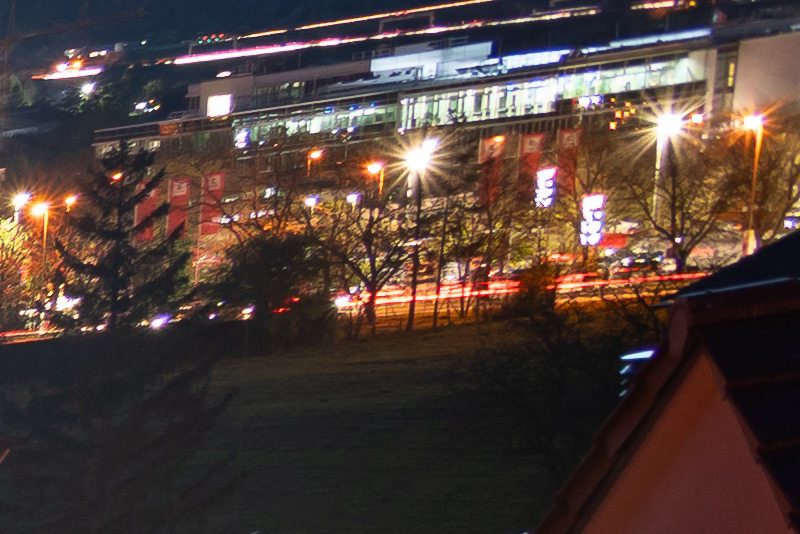
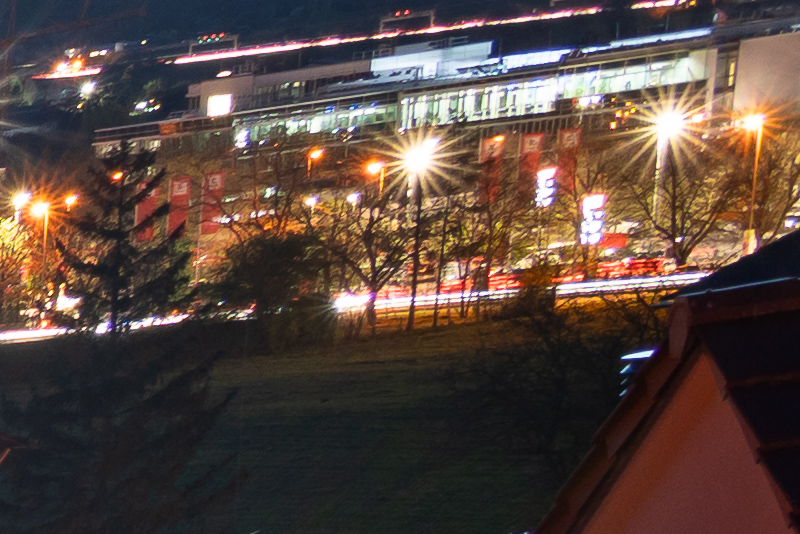
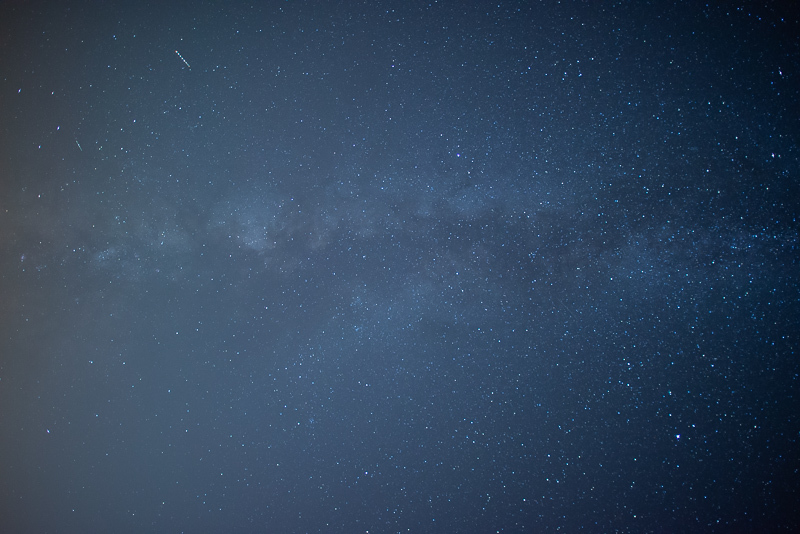
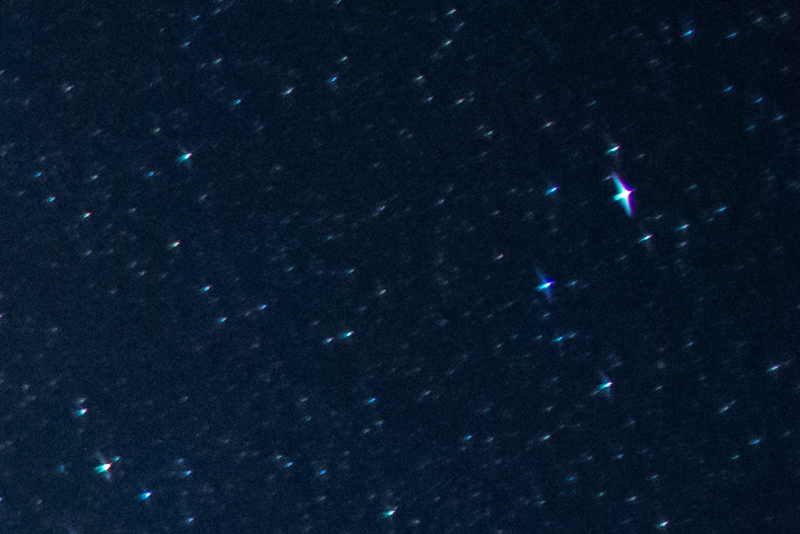
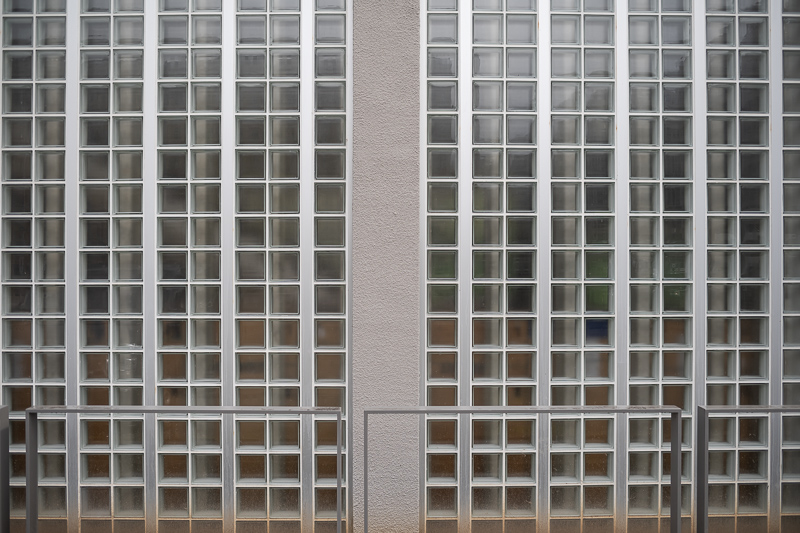
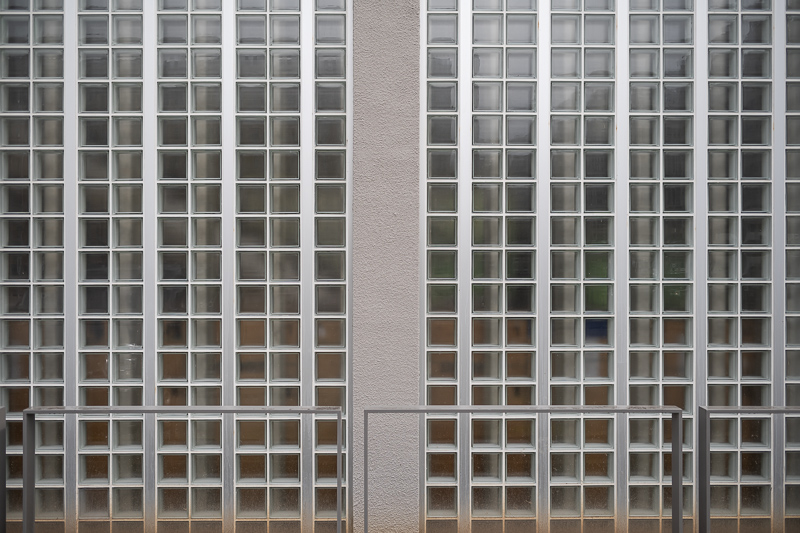

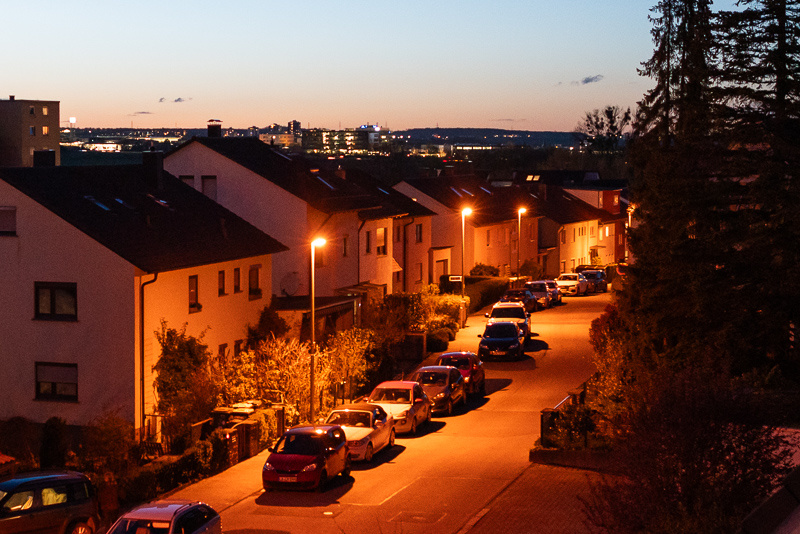
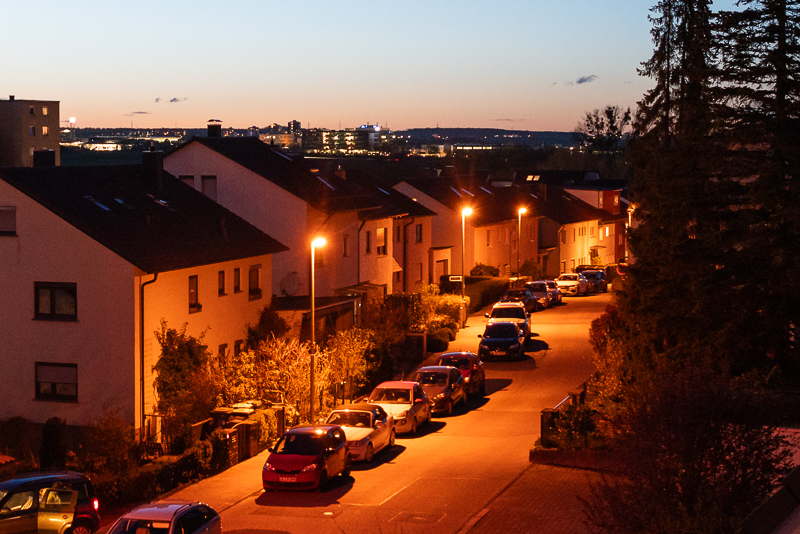
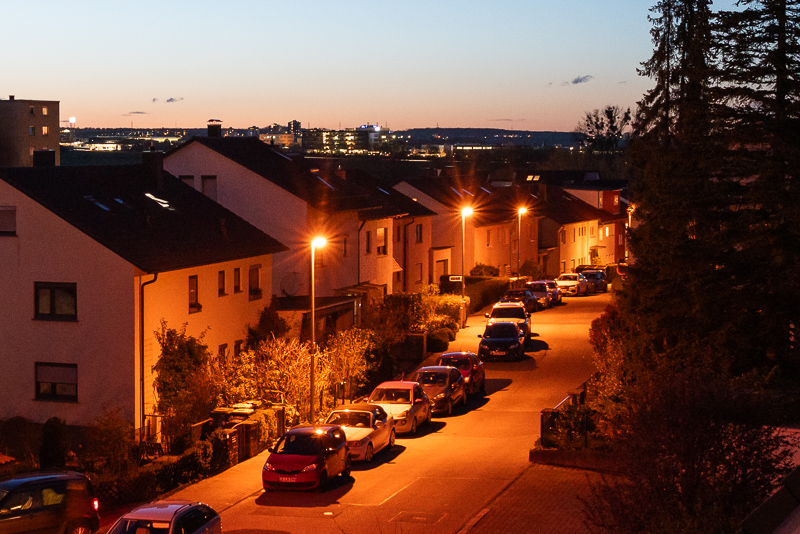
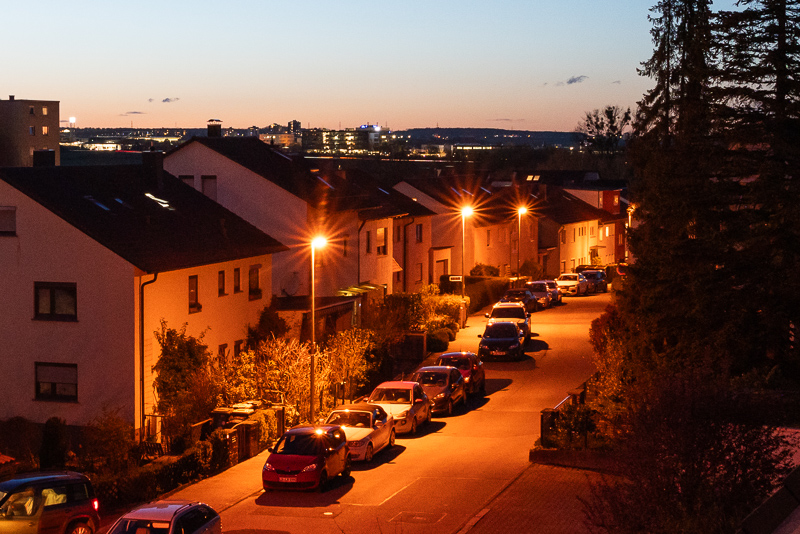

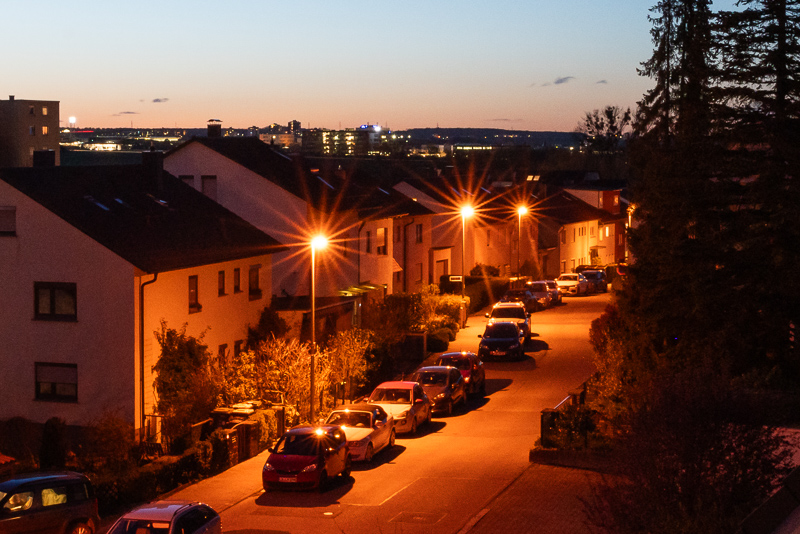
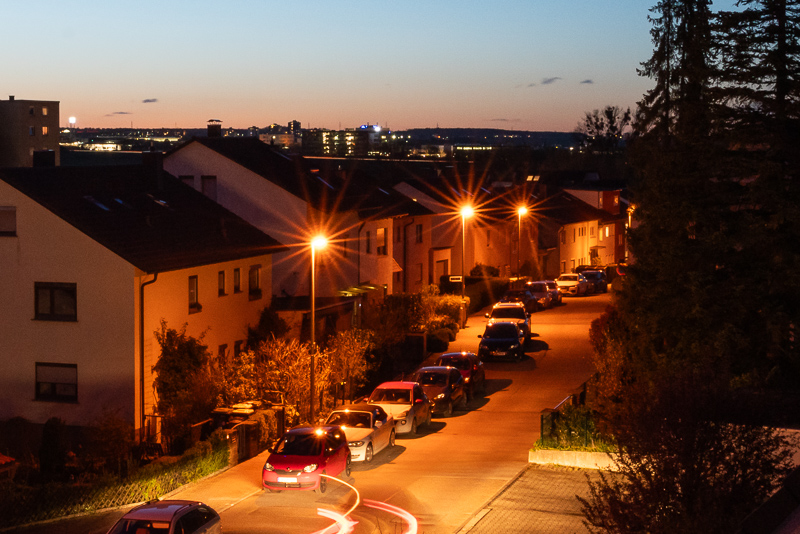
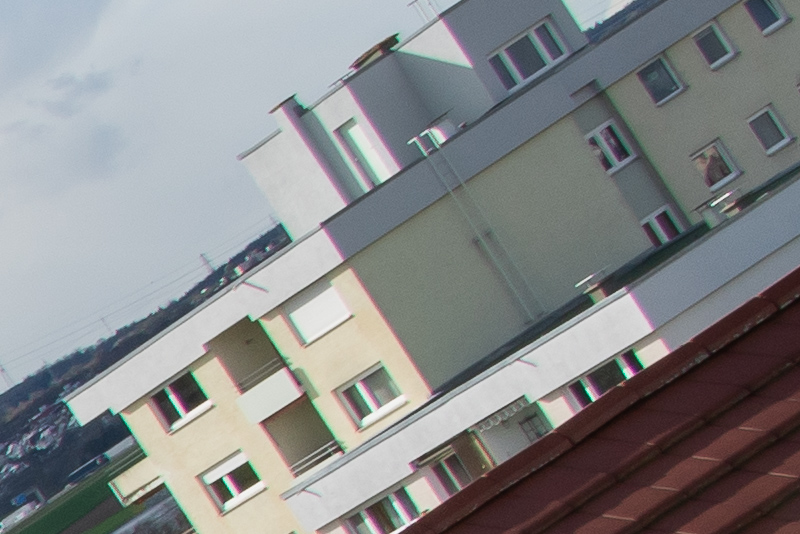
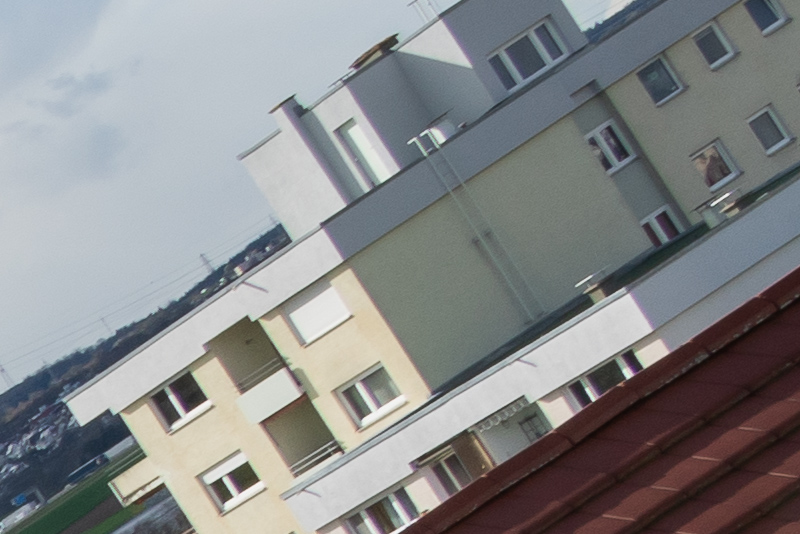
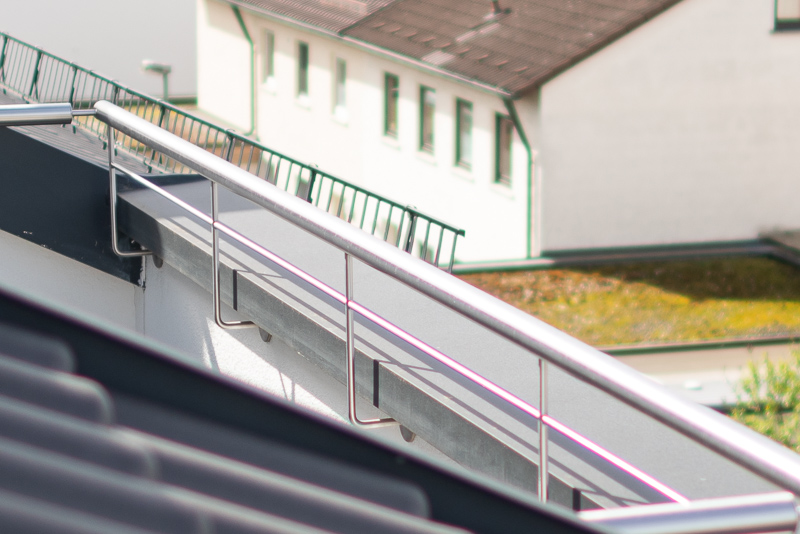
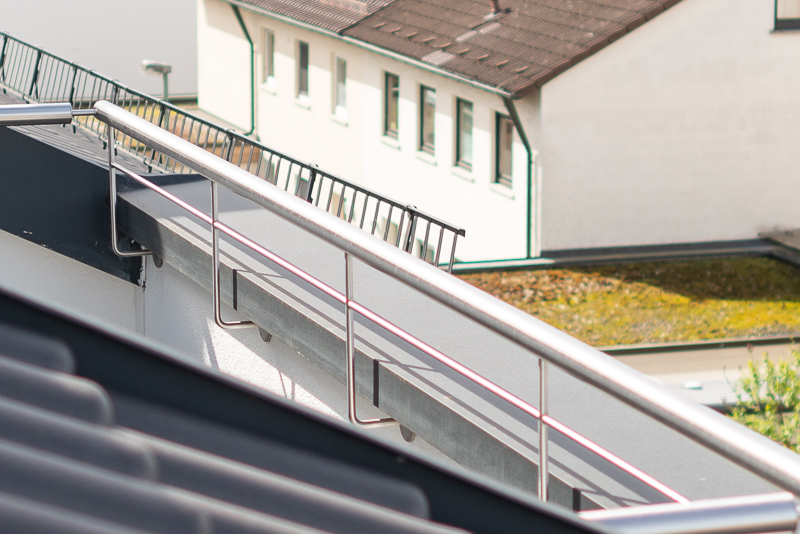
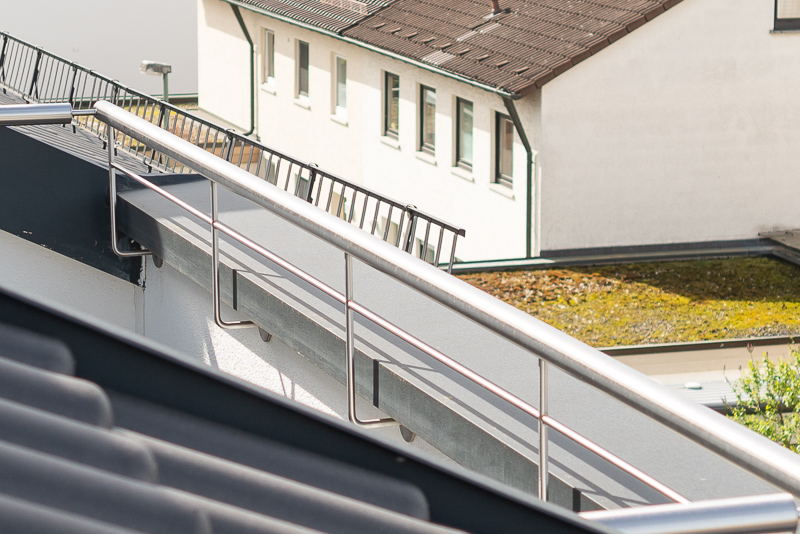
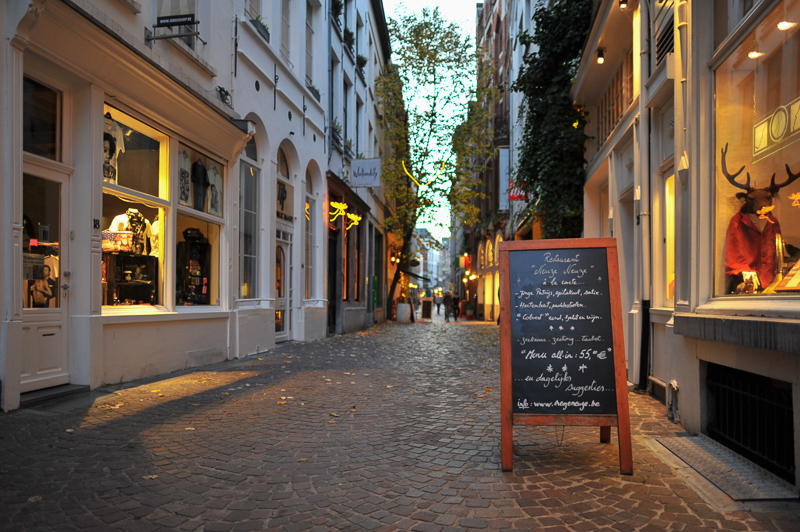

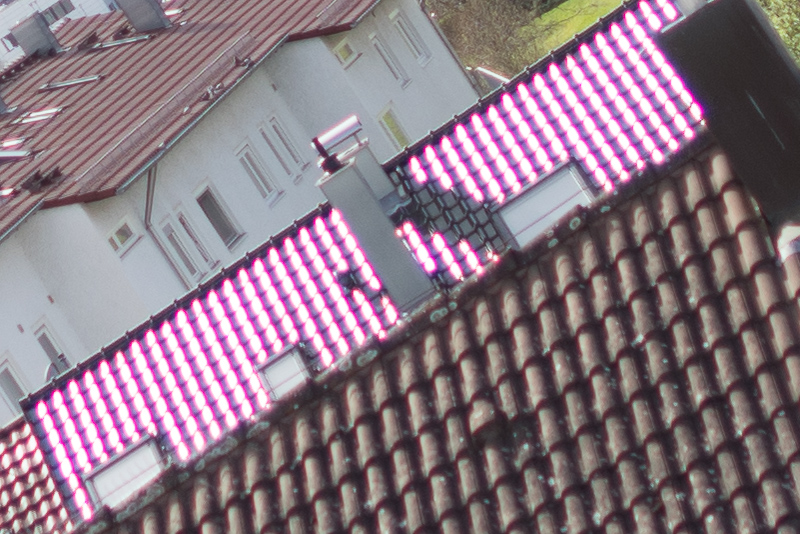
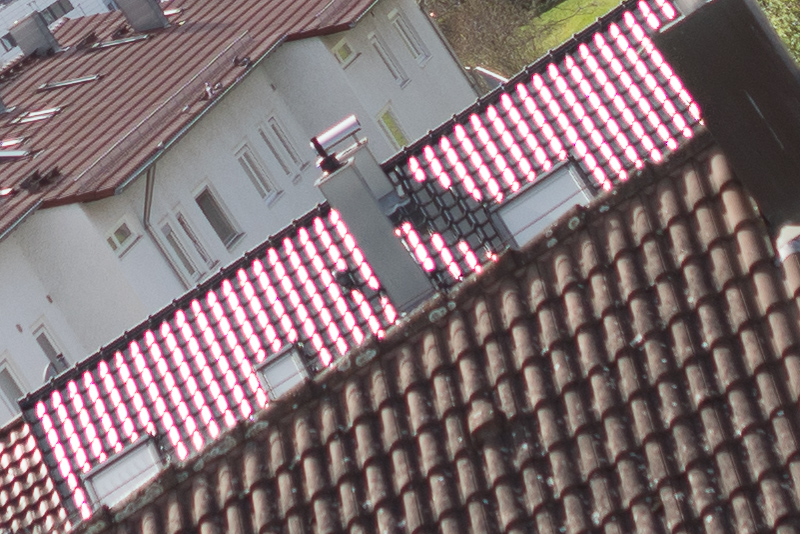
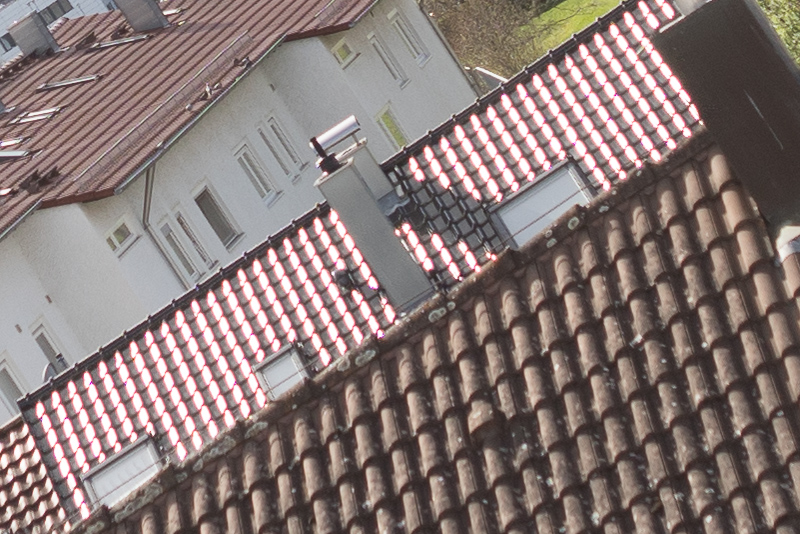
one of the expensive lenses of Nikon with character. Modern aspherical lens technologies all but make it irrelevant today unless shooting film on a Nikon SLR.
I have used Zeiss 25mm f2 (DSLR version). I would 200% recommend it for street, environmental portraits as long as manual focus is no problem. 90% recommend it for astro and landscapes. That lost10% is extreme edge sharpness. With used prices it’s a much better than this Nikon.
Never used Sigma 24mm art dslr but I know in that series 28mm is the more technical lens.
Until emergence of Sigma art lenses, Nikon could get away with this recommended price and performance. It’s a lens from a pre Sigma Art and pre D800 resolution era.
1,4f vs 2f has a fairly noticeable blur effect difference when shooting environmental portraits.
I went through a lot of forums, flickr accounts, and images in general before I bought sigma 24mm 1,4f art. I was looking at canon 28mm 1,8f at that time and various other lenses. But the rendering difference between 1,4f and even 1,8f or 2f is pretty noticeable. It might not feel like much on a 50mm lens, but at 24mm it does.
24mm 1,4f is a unique lens. As you mentioned, it creates an interesting DOF effect, the portraits made with these lenses have that unique character to them. The distortion adds up to the bokeh. It nearly adds up a slight tilt/shift effect to it. 24mm and 35mm fast aperture lenses seem to have that certain look to them, both of them can make a spectacular images.
I think this lens is one of the best for a FF camera. Its very versatile and very capable in many scenarios.
I own Sigma 24mm 1,4f ART lens in canon eos mount. It was very good lens on my 6D and it still is a good lens to use on Sony a7II through sigma MC11 adapter.
nice lens, but I will always prefer a 20mm f1.8 or a 28mm f1.4. IDK why, but 24mm is not a very appealing focal length for me
Excellent review as always, there’s something special about the rendering of this lens.
I wonder whether there is possibly more progress in wide-angle lenses than in telephoto lenses?
My personal observation (as a Canon user) is that I kept all my EF (mirror) telephoto lenses and sold all wide-angle lenses after switching to RF (mirrorless). This didn’t follow a plan, I simply was and am very happy with the longer EF lenses (mainly the 135/2.0, 100/2.8 Macro and 100-400/4.0-5.6).
Theoretically, the shorter flange distance of the mirrorless cameras should have benefits for short focal lengths, but little for longer – is this something you see in your tests? Beyond the obviously smaller size?
The space that had to be used for the mirror box can now be used for additional correction elements, which does have a bigger benefit for wide angle lenses whereas there is only very little benefit for tele lenses.
That being said, the latest DSLR wide angle designs (Nikon AF-S 28mm 1.4E, Canon 35mm 1.4 MKII, Tamron 35mm 1.4) easily play in the same league as the current mirrorless designs – they are bigger though.
Thanks – this fits with my impression that using an older telephoto lens with adapter is more attractive than an older wide-angle.
As Canon is very restrictive with their mount, 3rd party lenses don’t support autofocus, which I consider less relevant for wide angle. And your reviews provide excellent guidance especially for wide angle.
So 3rd party wide angle plus EF telephoto is my strategy until I win in Lotto. Luckily, many legendary EF telephoto lenses are now affordable.
I am Furious and find it quite a bit dissappointing to realized, that the 24mm 1.8 AF-S from Nikon is not even mentioned here in the alternatives category .
Really strange and a shame in my opinion, since that one is probably better than the 24mm 1.4 in almost every regard, apart of the bookeh of course , where the 24mm 1.4 has it’s advantage naturally !
meant “curious” , not “Furious” – dull auto-
correction
Review of that will follow, maybe I will add it to the alternatives section here then.
Fringer adapter works great full autofocus with Nikon AFS to Fuji X mount. Unfortunately they do not make for L mount not sure about Sony. Nice review, great photos from your D700 with the 24 Nikkor.